Deer industry on path to better things





FONTERRA has produced sizzling third-quarter financial results while keeping farmgate milk price expectations on the simmer for this season and the next.
Farmer-shareholders and unit investors will be counting their cash dividends to come – 60c a share capital repayment in August and perhaps another 40c after the end-of-year financials are announced in September.
But farmers will be nervous about the current downward trend in milk prices, given the uphill gallop of input costs and interest repayments.
The new season will begin in one week with an $8/kg midpoint forecast, down 20c from the old season and down $1.30 from 2021-22.
On the plus side, Fonterra has increased by 30c the new Advance Payment Rates, which will begin at
$6 for the first seven months of the season.
This will be 75% of the mid-point of the forecast range, compared with 60-65% historically.
CEO Miles Hurrell said the strength of Fonterra’s balance sheet enables it to get more cash to farmers earlier, to help with the rising tide of costs.

The balance sheet is in a very strong position, incorporating the proceeds from the sale of Soprole, enabling the capital return of $800 million to be brought forward to August.
Regarding the market outlook, Hurrell said the new milk price forecast reflects gradually rising demand for whole milk powder in China as its economy continues to recover from covid.
“However, the timing and extent of this remains uncertain, with China’s in-market whole milk powder stocks estimated to be above normal levels following increased domestic production.
Continued page 3
Dogs wait patiently on the back of a vehicle at the New Zealand Sheep Dog Trial Championships at Warepa, near Balclutha. Look out for a wrap of the event in next week’s edition.

Geraldine High School students, from left, Matthew O’Connor, Quinn Foley-Smith and Aidan Christie, were part of a Fencing Contractors Association project at Ōtāne in Hawke’s Bay, working to make a dent in the re-fencing of farms hit by Cyclone Gabrielle. The students are part of the Primary Industry Academy.

PEOPLE 7
An AgriHQ initiative aimed at attracting young people to the primary sector will launch next month.
NEWS 9
Mānuka honey producers will stand together and battle on, they say after bruising trademark loss.
MARKETS 10
Farmers Weekly unpacks the carbon sequestration implications of various on-farm tree scenarios.

TECHNOLOGY 18


Bryan Gibson | 06 323 1519
Managing Editor bryan.gibson@agrihq.co.nz
Craig Page | 03 470 2469
Deputy Editor craig.page@agrihq.co.nz
Claire Robertson
Sub-Editor
claire.robertson@agrihq.co.nz
Neal Wallace | 03 474 9240
Journalist neal.wallace@agrihq.co.nz
Gerald Piddock | 027 486 8346
Journalist gerald.piddock@agrihq.co.nz
Annette Scott | 021 908 400
Journalist annette.scott@agrihq.co.nz
Hugh Stringleman | 09 432 8594
Journalist hugh.stringleman@agrihq.co.nz
Richard Rennie | 027 475 4256
Journalist richard.rennie@agrihq.co.nz
Nigel Stirling | 021 136 5570
Journalist nigel.g.stirling@gmail.com
PRODUCTION
Lana Kieselbach | 027 739 4295 production@agrihq.co.nz
ADVERTISING MATERIAL
Supply to: adcopy@agrihq.co.nz
SUBSCRIPTIONS
0800 85 25 80 subs@agrihq.co.nz
PRINTER
Printed by Stuff Ltd
Delivered by Reach Media Ltd
Andy Whitson | 027 626 2269 Sales & Marketing Manager andy.whitson@agrihq.co.nz
Steve McLaren | 027 205 1456 Auckland/Northland Partnership Manager steve.mclaren@agrihq.co.nz
Jody Anderson | 027 474 6094 Waikato/Bay of Plenty Partnership Manager jody.anderson@agrihq.co.nz
Palak Arora | 027 474 6095 Lower North Island Partnership Manager palak.arora@agrihq.co.nz
Omid Rafyee | 027 474 6091 South Island Partnership Manager omid.rafyee@agrihq.co.nz
Debbie Brown | 06 323 0765 Marketplace Partnership Manager classifieds@agrihq.co.nz
Grant Marshall | 027 887 5568 Real Estate Partnership Manager realestate@agrihq.co.nz
Andrea Mansfield | 027 602 4925 National Livestock Manager livestock@agrihq.co.nz

Dean and Cushla Williamson Phone: 027 323 9407 dean.williamson@agrihq.co.nz cushla.williamson@agrihq.co.nz
Farmers Weekly is Published by AgriHQ PO Box 529, Feilding 4740, New Zealand Phone: 0800 85 25 80 Website: www.farmersweekly.co.nz
ISSN 2463-6002 (Print) ISSN 2463-6010 (Online)
The New Zealand Food Safety Authority has banned the sale of two commonly used animal boluses and announced a full investigation into all anthelmintic slowrelease ruminal boluses.
Bionic Plus and Bionic Plus Hogget are banned, and all 13 boluses registered for use in sheep and three for cattle will be reassessed, after an incident last year when sub-therapeutic levels of the boluses’ active ingredients were being released.
Strong demand across the board for fish species has produced improved net profits for listed fisheries company Sanford for the six months ended March 31.
Net profit after tax has risen from $6.1 million in 2022 to $11.1m this year and adjusted earnings before tax rose 38.7% to $26.6m. Revenue was up 2.5% to $277m and Sanford reported that its salmon division had a particularly strong 45% lift in profitability.
Auckland’s Nic Kearney has been crowned the 2023 Beef + Lamb Young Ambassador Chef.
Kearney, Jacob Aomarere-Poole from Feilding and Max Loh of Wellington contested the final. Kearney emerged the victor with his two dishes, Stuffed Lamb Saddle with Kawakawa, Parsnip and Lamb Neck Beignet, and Steak and Mushroom Pie with Sirloin and Bone Marrow Butter.
New Zealand reported a seasonally adjusted trade deficit of $1.4 billion in April as imports continue to outstrip exports. Imports were $7.7bn, down 1.1% compared with March, while exports were $6.3bn, up 8%. In the year ended April, the annual trade deficit was $16.8bn, far larger than it has been for the year ended April in the past decade.
results from consumer products are encouraging and recovery is underway.
FONTERRA’S profit after tax in the nine months to April 30 was up 180% to $1.326 billion as returns from protein products greatly outstripped those from milk powders and fats.
Earnings per share were 81c and, when normalised for the net gain from divestments, were 65c, up from 28c.
These are extraordinary numbers in Fonterra’s two decades and may not last as price relativities come back into balance between reference and non-reference products, CEO Miles Hurrell said.
The earnings contributions from ingredients were up 100% and from foodservice businesses were up 130%, although consumer products fell.
That included impairments on Asian brands and Fonterra Brands domestically, announced in the half-year results.



Hurrell said the third-quarter
Reflecting a nearly US$2000/ tonne premium for cheese over reference products, the earnings guidance for FY2023 has been increased from 55c-75c to 65c-80c.
“This is due to strong performance in our ingredients channel, with continued higher margins in our cheese and protein portfolio, particularly casein and caseinate,” Hurrell said.

The 15c range in the guidance is to leave room for valuations and end-of-year inventories, he said.
“Our products made and sold are baked in but there is still a lot to do in the fourth quarter before the new season’s milk begins to flow.”
In the nine months of FY2023, revenue was up 16% to $19.7bn, gross margin up from 14% to 18% and normalised operating expenses up 23% to $2bn.
“Operating expenses are up in part due to the impact of impairments reported in our FY23 interim results in March, as well
as ongoing inflationary pressures,” Hurrell said.
Return on capital has shown an extraordinary leap from 5.7% to 11.7%.
Fonterra’s dividend policy is to pay 40-60% of the normalised net profit, which would indicate a dividend of 40c for the full year at the upper end of the range. An interim dividend of 10c
Continued from page 1
“This is reflected in our wide opening forecast range for the season.”
Coming up on five years as CEO, Hurrell has delivered on the big measurable financial targets set in Fonterra’s change of strategy following financial losses in 2018-19.


The targets were an average farmgate milk price between $6.50 and $7.50; return on capital 9% to 10%, debt gearing down to 33%, dividends of 40-45c a share and 50% increase in operating profit.
He expressed personal satisfaction that most of the goals have been met and said a renewed strategy will be published later this year.
“But the price relativities

has already been paid.

Fonterra Co-operative supply shares are trading on the stock exchange at $3, up 50c from March and up 10c immediately after the very good third-quarter results.
Fonterra Shareholders Fund investment units are at $3.65, up from $3 in March and 20c on the day the Q3 results were announced.
between protein products and milk powders are a great help and we would assume those will even themselves out.”
Fonterra is well aware that farm costs are up considerably and that an $8 milk price in some cases may be below break-even, Hurrell said.
But “fertiliser prices are coming off their highs and maybe the OCR [official cash rate] has reached a peak, according to the Reserve Bank governor”.
Milk collection to the end of April was 1405 million kg milksolids, only a whisker below the tally for the same period in the previous season.
April itself saw a 7% increase, month on month, according to figures from the Dairy Companies Association of New Zealand.
INVESTMENT:
Fonterra has contributed $1.8 million towards a start-up producer of a slow-release, biodegradable, methaneinhibiting bolus.


Fonterra announced a $1.8 million investment in start-up Ruminant Biotech, through the Centre for Climate Action Joint Venture.

This is aimed at potent inhibitors for delivery from intra-ruminal capsules that could be used by New Zealand farmers to reduce methane emissions from their grazing ruminant livestock.
Hurrell paid tribute to farmers in many parts of the country where storm impacts, drought and excessive rainfall played havoc.
Fertiliser prices are coming off their highs and maybe the OCR has reached a peak, according to the Reserve Bank governor.


“Overall milk production has been okay, but we shouldn’t lose sight of the fact that it has been tough on groups of farmers,” he said.

have to find the balance between trade and protection.
IF ARABLE wants a future it has to stand up and be counted, industry leader Alison Stewart has told the Women in Seed forum in Christchurch.

“Growers and industry need to stop being under the radar, those days are gone,” the chief executive of the Foundation for Arable Research (FAR) told the 150 people in attendance.
“If you want recognition and reward, verify it, stand up and be counted, tell your story, get out there and promote what you are doing.”
As a research body FAR can only do so much.
“We can’t dictate to our growers; all we can do is research and provide the resources.
“It’s not our job to enforce them, we don’t have the levers for that like the meat and the milk companies.”

Touching on the sector’s biosecurity issues, Stewart pulled no punches.
“Biosecurity has the potential to derail the industry overnight, and imported seed is the main pathway for biosecurity incursions.

“Every day counts when in an incursion. The risk is huge if you don’t act soon enough and hold government officials to account to get decisions. The wait could cost the industry $300 million.”
Imported seed is the challenge.
“We want to have the seed coming in because we want to build our seed industry but the opportunities in doing that increase the biosecurity risk so we
“The seed companies need to step up. There’s a lot we can do to better manage those imported pathways.”
Aiming to better drive industry innovation, FAR has established Cultivate Ventures to support arable-focused agri-tech and agri-food companies in delivering benefit to the sector that can be used by growers to improve their profitability.


“This is an investment fund to create disruptive technologies to move our industry forward.
“We have got to do something different, take risks and open opportunities, we need to bring something to the table including a more robust biosecurity framework.”

FAR can give clear guidance but it can only facilitate going forward.
“Growers and industry need to get out from under the radar to get the recognition and reward.”

Fuelled by her passion for global macro trends and their impact on New Zealand’s prosperity, NZX head of insight Julia Jones told the forum it’s time to rediscover ambition.
“We used to have great ambition, now we are whingers.
“We have lost ability to give the sense of hope for future generations to inspire confidence in change.
“You can’t slow change, it’s societal, it’s bigger than us. The more you fight change the more you wear down.
“We need to listen to what the world is telling us.”
It is about adapting, growing things in the right place using the land in the best way.

“We need to focus on what we can control, support farmers to manage the micro needs of their business.”
NZ isn’t going to feed the world; it wasn’t set up for that.
“But we need them to buy our product.
“Create the narrative, [don’t] be assigned one. Navigate and adapt change, convince those who have not lived it through before that we can do it, we have done it and we can do it again.
“Hardship, yes at times, but don’t flip-flop that into non-reality.
“Negativity is not leading. Lead by navigating reality and positivity.
“There will be things you hate because you can’t change them but have the wisdom to know the difference to have the conversations to make change positively.
“The [primary] sector has a great deal of hope and massively cool future.
“Find the passion, find the ambition,” Jones said.
Looking to the longer term, ANZ agricultural economist Susan Kilsby said New Zealand leaves a lot of value on the table in terms of what it produces.

Global resources for food production are tightening and consumers are seeking the

sustainability attributes that NZ is well placed to deliver.
“Information about how we produce food and fibre in NZ must be passed thorough the supply chain to consumers so we can deliver sustainable returns to our producers.”
To achieve this, farmgate prices will differ between producers and a larger proportion of supply will be contracted.
More fixed prices for income and costs will be achieved through forward contracts and use of derivative products.


“Going forward we will see big change in farmgate prices depending on what we are producing on farm to meet contract and market specifications. “Regulatory change is happening at pace and we have to move forward to meet consumer expectation,” Kilsby said.

The sector has a great deal of hope and massively cool future. Find the passion, find the ambition.Julia Jones NZX

WHILE New Zealand is not yet out of the woods, the Mycoplasma bovis eradication programme has reached its halfway mark meeting expectations. But now, as the programme enters the critical phase of hunting down the last case of infection the country will need to keep a finger on the pulse, Biosecurity and Agriculture Minister Damien O’Connor said. In May 2018, the government announced NZ would work to eradicate M bovis in partnership with DairyNZ and Beef + Lamb NZ. The 10-year programme is jointly funded by the government, 68%, and DairyNZ and BLNZ, 32%.
“We are on track. We are down to one infected property. We expect that to be cleared in a couple of weeks. We have been down to zero and we will get back to that but it will take everyone to keep the finger on the pulse,” O’Connor said.
“The expectation is that the next five years, even less, we will be able to say we are [M bovis] disease free.


“But nothing is guaranteed until we get through the next five years.”
O’Connor acknowledged there had been some “horrific scenarios” for many individual farmers because of uncertainty in the early stages.
“A lot of lessons have been learnt. At the beginning we were in catch-up. A lot of improvements have been made right across the board. The focus now is to keep
ahead and ensure there is no lapse of practice creeping in.

“We must keep on top of it now, not sit back and take anything for granted.”
The programme is nearing the end of its delimiting stage before moving into stage two, provisional proof of absence – the holding pattern.
“This is when we can’t find any more [infection] but we are still doing the monitoring through the bulk milk tank [BTM] testing and ongoing background surveillance.”
The national surveillance programme, including the beef surveillance programme and the BTM testing, have provided confidence that M bovis is no longer widespread in NZ.
The surveillance programme has played a significant role in finding pockets of infection outside the
Scheme by default if no alternative mechanism is agreed to means there is an urgent need to finalise a pricing structure.
known network. The budget for the 10-year programme was $870 million.
From July 1 2018 to March 31 2023, $641m, 71.4% of the estimated total cost, was spent on eradication.
“There will be ongoing costs but they will taper off and I think we can come in under that $870m figure.”
O’Connor is quietly confident the programme’s goal will be reached, possibly even before the end of the next five years.
“The goal to eradicate has
absolutely been worth it, the impacts of bovis have been worth the effort and I will continue to do what I think is right and that is to make sure at the end of five years we are clear.”
In the programme’s first five years 184,000 cattle off 280 farms were culled, from 210 farms in the South Island and 70 in the North, comprising 149 beef, 68 dairy and 63 others, including lifestyle properties.
A total of $239.7m in compensation from 2879 claims has been paid out.
TIME is running out to finalise a system to price agricultural emissions, Agriculture Minister Damien O’Connor says.

Questions remain about the
He Waka Eke Noa (HWEN) industry agreement on reducing agricultural greenhouse gas emissions, chiefly around the level of pricing, how to recognise the various forms of sequestration and creating a single, internationally recognised emissions calculator for farmers to use.
At present there are 11 calculators.
O’Connor pointed out that legislation putting agriculture into the Emissions Trading
Money raised from pricing agricultural emissions will be invested back into research and development and O’Connor told Farmers Weekly that will include identifying and recognising onfarm sequestration, including the role of soil.
There is a view that New Zealand’s young soils do not have much capacity to absorb carbon, but O’Connor is of the view that sequestering even small amounts of carbon is possible and worthwhile.

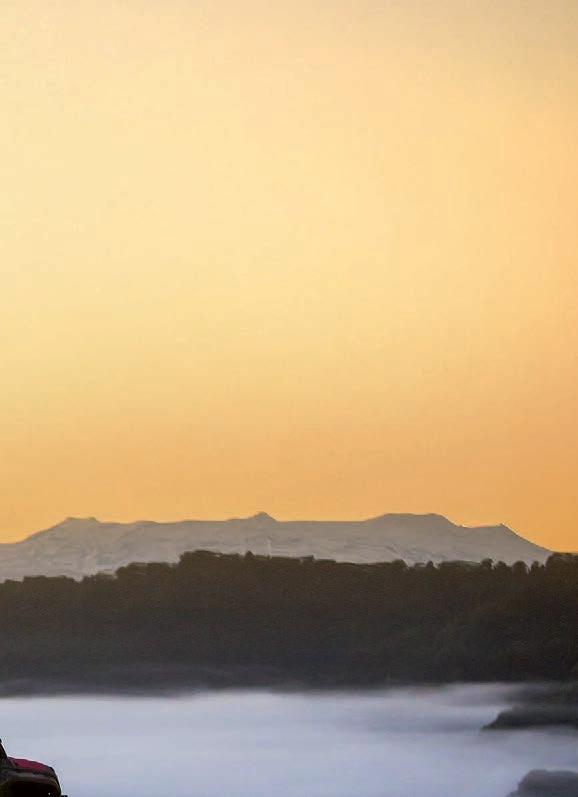
“There is clearly potential but in NZ it is more complex, which is why we need a reliable source of money which HWEN is designed to

do, to generate cash for research and development.”
Similarly, the use of plantain, breeding from low-emitting animals and pending technology such as boluses and feed additives will all assist.
“These things all add up to hitting the target of a 10% reduction in methane by 2030.”
O’Connor hopes to announce an update in the next month or two on the development of Freshwater Farm Plans. The release of these plans, which are an alternative to resource consent for farmers who intensively winter-graze stock, has been delayed.
Meantime, the government hopes to know within two weeks how to deliver individual support for cyclone-hit Hawke’s Bay and Tairāwhiti farmers and growers.
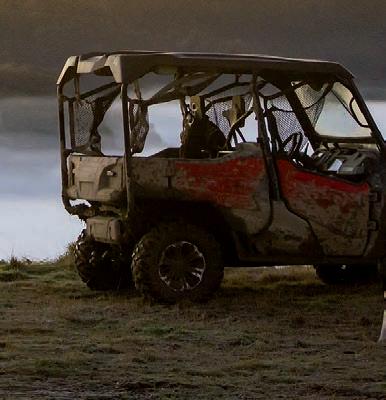
8- 9.5%
O’Connor acknowledged there is still much recovery assistance needed following Cyclone Gabrielle, and he is awaiting information from which to build a package of targeted assistance.
“We are preparing a comprehensive recovery package to get growers and farmers back at operational levels,” he said.
That information will come from growers, farmers, banks, insurance companies, councils and central government, and be based on LiDAR laser sensing of the landscape and Hawke’s Bay Regional Council plans.
For growers, O’Connor said, the focus is on those who still have a crop to harvest this season, to ensure their business and the regional economy continue to benefit.
Others are still clearing their orchards and properties and could be a year or two away from resuming production – and some will not recover.
O’Connor said money has been granted to regional councils to assist with silt disposal along with assistance for landowners to remove silt from orchards and farms.
















Canterbury to Hawke’s Bay to join 25 contract fencers who spent two days replacing fences destroyed by Cyclone Gabrielle.

Christie was fencing, to the point he has entered competitions and secured a part-time job with local fencing contractor Ben Haugh.
IT WAS a chance for Aidan Christie to put his fencing skills into practice in the most useful way.
The Geraldine High School deputy head boy and two classmates travelled from South
Christie, 17, Quinn Foley-Smith, 17, and Matthew O’Connor, 16, are all studying a Primary Industry Academy course, a high school course linked to the Primary Industry Training Organisation. One course that attracted
It’s the reward of seeing the fruits of a day’s work that he finds attractive.
“It’s rewarding to look back at what you’ve been doing for the day.”
When the call went out from the New Zealand Fencing Contractors Association for fencers to help farmers in Hawke’s Bay, the three raised funds to travel north.


Christie said the damage was devastating.
“It was so sad to see those farms ruined, covered in silt. It must be so hard for them.”
He estimates the students helped replace about 2km of fencing, which they erected under the guidance of some of the country’s leading fencers.
“They gave us lots of advice, how to tidy our work and how to be more efficient.”
Christie’s family runs a sheep and beef farm and he plans to attend Lincoln University next year to study a Diploma of Agriculture and Diploma in Farm Management while continuing to fence as he can.
He credits his school’s Primary Industry Academy with introducing him to farming skills such as fencing.

“Without the course, I would not be where I am today.” He hopes to travel north again in spring when association members plan another trip to help replace damaged fencing.
It was so sad to see those farms ruined, covered in silt. It must be so hard for them.
The season began with sales of exotic bulls and prices and clearances were good for vendors, agents say.
OPAWA Simmental at Albury, South Canterbury, started the bull sale season in the south with a top price of $21,000 for Opawa Kamikaze, sold by the Timperley family.
David Timperley said the purchaser was Rowan Sanford, from Hawke’s Bay.


Opawa put up 23 bulls this year, eight more than last year, and sold them all for an average price of $7300.
Gold Creek Simmental, Mātāwai, East Coast, had a top price of $13,000 and other sales for $11,000 and $11,500.
The Sanson family’s offering was 31 bulls and 29 of those sold at auction for an average price of $7070.
Ruaview Simmental and Angus at Ohakune had a top price of $15,000 for Ruaview Henry 210010 and $8000 for Powerhouse 210019.
The average paid was $5140 for
18 bulls sold out of 31 offered. Kerrah Simmentals, Wairoa, had an excellent sale of 72 bulls out of 73 offered and an average of $8285.
Top price was $18,000 paid for Kerrah K429 and $17,000 was paid for Kerrah K269.
Glenwood Angus, Taieri, had a top sale of $10,000 and two at $9000, among nine sold of 11 offered and an average price of $7666.
At the same time Loch Lomond South Devon sold two at $7800 and $5000.
Puketoi Angus, Central Otago,
What will you do with your cows if it gets really wet this winter?
We’ve worked out our options
The team knows what to do
We’re ready to move
Good wintering is great farming



dairynz.co.nz/wintering
sold 18 out of 19 bulls offered with a top price of $11,500 and two sold at $10,000. The sale average was $7333.
Penvose Angus at Wedderburn had a top price of $16,000 and sold two at $15,000. There was a full clearance of 30 bulls for an excellent average price of $10,800, some $3000 ahead of last year.
Inaugural online vendor Dave Warburton in Hawke’s Bay sold Hollow Top Angus bull DG2111 for $16,000 and another for $4000. He also sold two Waiohine Hereford bulls for $3500 each.
Delmont Angus, at Clinton, sold 28 of 30 bulls offered with a top price of $12,000 and an average price of $7242.
Coleman Farms Charolais at Kaikohe sold 15 out of 16 at auction with a top price of $7250 and an average price of $5150.
Kaimoa South Devon at Eketāhuna sold 15 out of 20 with a top price of $11,500 and an average of $7833.
Beresford Simmental, Owaka, had a top price of $19,000 for Beresford 1205210013, paid by Jon
Continued page 8
 TECHNOLOGY Beef
TECHNOLOGY Beef
WINTER grazing of livestock can play an important role on cropping farms, a crowd of 140 farmers were told at a recent Foundation for Arable Research and Beef + Land New Zealand field day.
FAR chair Steven Bierema hosted the event at his Mitcham farm near Rakaia, which is fully cropped in summer and finishes 4000 lambs as well as winter grazing dairy cows.

Bierema, who farms in partnership with his son Pieter Taco Bierema, grows ryegrass, clover, pak choi, garden peas, marrowfat peas, maize, barley and milling and feed wheat.

Pieter said the finishing of lambs is closely linked with ryegrass, with the lambs coming in autumn and the last sold to the meat works in mid-October when the final paddock of ryegrass is closed for seed production.
Lambs are grazed on former clover seed paddocks until the end of May.
Left to regrow after being harvested in February, these
paddocks produce 3000kg of dry matter a hectare and post grazing are sown in milling wheat, utilising the extra nitrogen in the soil from the nitrogen-fixing clover.

The lambs are grazed on greenfeed oats in the winter, which are drilled after either peas or cereal crops while the dairy heifers are winter grazed on kale and some short-rotation Italian ryegrass after peas.
“It sounds complicated, but it isn’t. The cropping and the lambs in winter really complement each other.

“We try to maximise it as much as possible with the farm in full production all year.”

Arable farmers need sheep farmers to breed lambs for them to graze, while sheep farmers need an outlet for store lambs they are not able to finish themselves.
“We need each other,” Pieter said.
Erica Callaghan, one of three other farmers on a panel, said moving to an arable-livestock system presented an opportunity to increase returns and spread cashflow on the family farm at Fairlie.

It sounds complicated, but it isn’t. The cropping and the lambs in winter really complement each other. We try to maximise it as much as possible with the farm in full production all year.
Continued from page 7
Beresford vendor Warren Burgess put up 18 bulls and sold 11, with an average of $7410.

Leafland Simmental, Mosgiel, sold 11 of 22 bulls offered with a top price of $7000 and an average of $5090.
Angus
Lot 2 was Kincardine 21115 and he sold to Matukituki Station, Wānaka for $18,000. Two lots made $16,000 and the sale average was $10,850 for 16 sold out of 18 offered.
“Historically we have done quite a lot of winter grazing but now with livestock integration part of the overall system we are cropping 1800ha with 50% wheat, 30% linseed and the rest in barley, clover, kale or forage.”
Store lambs come in from March to the end of July with 100 R2 calves also part of the livestock component.
“The biggest challenge we have is the environmental regulations, farming under land use consent and now winter grazing,” Callaghan said.
Hamish Marr runs his 500ha operation at Methven as two agronomically separate entities
with 400ha arable growing peas, wheat, red clover, oats, barley and vegetable seeds, and 100ha pastoral carrying replacement dairy heifers stocking 3.5 animals to the hectare on greenfeed cereals, rape and swedes.
“We used to trade lambs. Some years we made money, some years we didn’t.
“Now we have an arrangement with a neighbour for 4000 lambs and that fits in with arable every year.

“It’s a simple thing, grazing

animals, and something the soil biology can convert into the next crop.
“Animals are very low risk. Think of them as another crop – they are not at risk of frost or hail and they certainly don’t roll along the paddock on a windy day, and you can bank on their income every year.
“It’s agronomics versus economics – you can chase the finances all you like but you have got to balance what fits your system,” Marr said.
When Daryl Oldham put in irrigation 10 years ago, he looked at how he could best integrate it into the farming system.
“The breeding ewes didn’t stack up. We did winter grazing cows for five years, then moved to lambs, and we have found they give a lot more flexibility in the cropping system.
“I see the biggest issue going forward, with fewer and fewer breeding ewes around, will be the supply of store lambs,” Oldham said.


 Craig Page NEWS Education
Craig Page NEWS Education


ANEW AgriHQ initiative aimed at attracting more young people to agriculture will be launched next month.
AgriHQ’s successful Ag&Ed programme has been revamped and is poised to return to Farmers Weekly, this time in partnership with the Ministry for Primary Industries (MPI).

Starting in June, a double-page Ag&Ed education programme will appear in Farmers Weekly for six weeks.
The pilot programme will culminate in a two-day innovation challenge in Manawatū aimed at Year 11 pupils from throughout New Zealand.
Twenty pupils will be selected to take part in the challenge, which will team them up with industry leaders to develop strategies and models aimed at solving agri-sector challenges.
well. We want to make sure that our youth understand that agriculture is the fabric of every New Zealander.”

Craig said the weekly publication will have modules for students, teachers, parents and children to learn more about agriculture.
“It’s an exciting space to be in and one that will continue to carry New Zealand forward for future generations.”


The Ag&Ed challenge will highlight a current on-farm problem and students will join with industry experts to help create solutions “that our ag sector will listen to and use”.
“Our aim at AgriHq is to create avenues
for our youth to engage in and participate with those in our ag space. We’ll look to run Ag&Ed across the school year and have multiple challenges tied to field days across New Zealand,” said Craig.


The new look Ag&Ed will have the same strong content, with QR codes for students to learn directly from the source.
Students wanting to be involved in the innovation challenge can apply through www.agrihq.co.nz, where they will complete a short application form.
“We have devised a few questions to help us narrow down to the initial 20 students, who we will call and speak with individually.
What we are mainly looking for are students who have a passion for all things agriculture. They are curious, looking to help push the sector forward and are open to being challenged.”

Craig said it is exciting to have MPI on board, and this is an opportunity to showcase the work it does.
“Our partnership is highlighting MPI’s capability across the entire ag sector, and this pilot is focused on PIAS, or Primary Industry Advisory Services. We’re looking to upskill our youth around MPI’s trusted advisor network, showing this as a true career pathway.”
Dave Ag&Ed project manager
Ag&Ed project manager



At the completion of the challenge teams will present their plans to judges in a Dragon’s Den-type scenario.


Ag&Ed project manager Dave Craig said it is hoped the initiative will cement a partnership with MPI and help attract young people into a primary industry advisory career.

“Ag&Ed was devised to complement our agri-business teachers in the great work they do in our schools.
“Our pilot programme, powered by MPI, is focused on showing current agri students that becoming a primary industry advisor is a legitimate and rewarding career after school. Agriculture isn’t just about farms, cows and sheep, as we know too
“ The gains we’ve seen are better reproduction, better six week in-calf rate and less empties.”
Mel Lilley, Mid Canterbury
Our pilot programme, powered by MPI, is focused on showing current agri students that becoming a primary industry adviser is a legitimate and rewarding career after school.
CraigBUZZING: Ag&Ed supports the agriculture curriculum in high schools and this new programme will target those who want to go onto advisory roles in the sector. Richard Rennie NEWS Apiculture

TRANS-Tasman legal wrangle of “extraordinary proportions” over trademark rights has gone against New Zealand mānuka honey producers trying to protect the term “mānuka honey”.
Intellectual Property Office of NZ (IPONZ) assistant commissioner for trademarks Natasha Alley in her ruling noted the scale, complexity and length of the challenge, with Kiwi producers pitted against Australian mānuka producers, who claimed “mānuka honey” was not a distinctive, NZonly trademark.
The trademark commissioner’s ruling agreed, meaning that under the Trade Mark Act 2002 it could not be used as a certification mark in NZ.



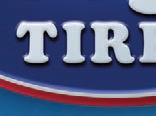
The Australian opposition came from producers in the form of the Australian Mānuka Honey Association (AMHA), pushing back against the NZ based Mānuka Honey Appellation Society (MHAS).
Earlier this year NZ producers lodged an appeal to the equivalent office in the United Kingdom. As with the NZ ruling, the UK office found there was a lack of definition in the term.
The lucrative mānuka honey
business valued at almost $300 million a year in 2021 has been fraught with trans-Tasman tension since NZ lodged its first application to protect the brand “mānuka honey” back in 2015.
The commissioner noted it was a challenging task, particularly when distinctiveness between the two sources was minimal, and NZ fell short in establishing the necessary distinctiveness.
The decision has been met with disappointment by the honey sector, which is now mulling over its options, including making an appeal.
“Today’s finding reflects the technicalities and limitations of conventional IP law to protect indigenous rights,” said Pita Tipene, chair of the Mānuka Charitable Trust.

“It is disappointing in so many ways, but our role as kaitiaki (guardians) to protect the mana, mauri, and value of our taonga species, including Mānuka on behalf of all New Zealanders, is not contestable.”
He said the law had proven to be an ass in this instance, with IPONZ limited to the legal criteria laid out in the Act.


The assistant commissioner noted that while tikanga (customary) principals were relevant, they could not override the clear provisions of the Trade Marks Act, with its requirements of distinctiveness.
She noted her “considerable sympathy” for NZ producers because of mānuka honey’s cultural significance. She observed there did not appear to be widespread use of the term in Australia until after NZ’s success took off, and well after the antibacterial properties were discovered in NZ in the 1980s.
“However, by the time MHAS applied for this certification mark in 2015 there was clear use of ‘mānuka honey’ in Australia.”
She noted a late start by






Australia did not mean MHAS should be able to monopolise use of a wholly descriptive term, and savvy marketing by the Australians did not equate to dishonesty on their part.


Jason Prior of Down Under Honey in Cheltenham said the case has proven just how difficult it is to protect terms that have become commonly used.
“It is not because there is no case there, it’s just the law does not work with more generic terms.”
He likened it to trying to protect
the term “Jandals”, well after they had been invented and the phrase had fallen into common use to describe the rubber sandal.
“But what the Australians are doing is like trying to call a leather sandal a Jandal, it’s quite different.”











He believed NZ producers could have a good pathway using Geographical Indication (GI) protection, similar to what the French use to protect Champagne, or the Italians’ Parmigiano Reggiano, and he is keen to see the NZ government work to bring in such a protection system.


Apiculture NZ CEO Karin Kos said the industry will be making a united stand on a decision it wholly disagrees with, but she would not be drawn on whether an appeal would be lodged at this point.
She is also optimistic about the potential role GI may play in protecting NZ mānuka honey, at least within the European Union.
GIs were a key part of the NZEU free trade agreement, where distinctions over certain cheeses’ provenance are made.

The EU FTA includes the definition of mānuka and a separate tariff recognising the distinctiveness of it as a taonga species solely from NZ.
NZ wines are also globally protected under GIs, setting out the regions and production claims that can be made by winemakers.
loan, which requires its borrower to commit to key environmental, social and governance targets.








a further intention of sending zero waste to landfill by 2030,” Trevelyan said.
TAKING his company’s longtime approach to sustainability and attaching it into a financial instrument was a natural next step for Trevelyan’s Pack & Cool managing director James Trevelyan when he signed the family firm on to a sustainabilitylinked loan.
The Te Puke-based packhouse operator is the first post-harvest company in New Zealand to sign on for an ASB sustainability-linked
Borrowing costs are adjusted based on subsequent performance against those targets.
Trevelyan said it was a natural next step for the firm which has been focused on a sustainability pathway for almost a decade. The company has been publishing annual sustainability reports since 2014, covering the same key areas as the loan’s parameters.






“One of our goals is to reduce our waste to landfill by 10% a year based on a 2021 baseline, with
There were some sound economic reasons for the landfill reduction focus. He said pursuing a “business as usual” approach would cost the company $200,000 a year in landfill fees. These have been reduced down to $15,000.

“This is where we have managed some of our biggest wins. We make a dollar out of it, so why would you not do it?”
The company has managed to find uses for most disposable products, down to hair nets worn
by packing staff. He said the push onwards with sustainability, particularly around packaging and materials, could often include having to have some frank and firm conversations with material suppliers.
“We would have supplies asking us why are we pushing back on a certain material, that they are not getting that from anyone, anywhere else.”
One example is the unwanted backing from fruit stickers that contributes 50t a year to landfill in NZ, just from kiwifruit.
He said the ASB loan has
sharpened their focus on sustainability even further, putting some firm metrics around their targets across four key performance indicators.
“I was initially a little sceptical, but now we are in it, it has finetuned our decisions here.”
ASB head of sustainable finance James Paterson said ASB is progressing well on its mission to support industry transition with a cumulative sustainable lending target of $6.5 billion by 2030 for green, social, and sustainabilitylinked lending across commercial and rural sectors.
LAST month youth from all over motu gathered in Wairarapa to take part in New Zealand
Hereford Youth’s annual three-day development forum.
Launched in 2021, the development forum focuses on creating an event where youth can immerse themselves in all aspects of the beef industry.


One does not need to be a Hereford Youth member to attend the forum, or even be from a farming background. It is open to people aged six to 30 years old.
“The only criteria are that you need to be keen to learn about the beef industry and have a give-it-ago attitude,” NZ Hereford Youth co-ordinator Sage Harding said. This year’s forum kicked off with a visit to a local business, Homegrown Butchery. Owner Ali Kilmister explained that the butchery’s job is only done once
the stock leaves the farm gate to supply homes around the country with meat. The butchery grows, trucks, processes and sells meat from the farm.

He explained what to look for and the implication when things are not quite right in an easy and methodical way. Even the youngest youth member, who was 10 years old, was able to follow along.
The business embraces the idea of “eating how farmers eat” and allows customers to connect to where their food comes from. While there, the Hereford Youth youngsters were shown how to butcher a lamb. The butcher took the group through ways they could improve their own home kills.
The group also visited a commercial farm, Te Rangi Station in Whangaehu Valley, where they were given a tour of the farm and learnt how it uses Angus, Herefords and Charolais in its breeding programme. The day ended with Hereford Prime patties on the BBQ at Te Taumata Stud.

Day two of the forum was an early start as the group headed to Otapawa Poll Herefords, which sits in the foothills of the Puketoi Ranges. Despite the wet ground conditions, they managed to have a good look around the wellmaintained farm.
The group remarked on what an eye-opening experience it was, as from one of the high points it was easy to see that Otapawa Station was being surrounded by pine forests.
The group enjoyed sharing in the Robbie family’s farming passion, as their breeding stud ticks on despite ongoing pressures from forestry companies.


The farm tour was followed by two workshops, on structural assessment and EBVs/Genetics.




Otapawa Station owner Stuart Robbie took the group through structurally assessing cattle, passing on a wealth of knowledge.
“He explained what to look for and the implication when things are not quite right in an easy and methodical way. Even the youngest youth member, who was 10 years old, was able to follow along,” Harding said.
The Otapawa Station workshop set the group up perfectly for the last day of the forum.
Day three saw the group’s knowledge tested when they participated in a stock-judging competition, and those over 16 had herdsperson leadership interviews.


Two lines of Te Taumata heifers were put up for the stock judging, and everyone had to rank the lines based on their structure and give the reasons behind their decision. The public-speaking aspect of the judging was out of most of the youngsters’ comfort zones, but stock judge Peter McWilliams said
he thought everyone did very well. The herdsperson interviews were a chance for the older members of the group to test their knowledge about the industry.
The three-day forum concluded with a farm tour around Te Taumata Herefords.
“Overall, very impressive weekend,” tour attendee Georgie Moody of Manawatū said. “Awesome guest speakers and breeders – such a privilege to be able to tap into their knowledge.”
Plans are already in motion for next year’s development forum and there are still events to be held throughout the year.

THE New Zealand Merino Company has advised ZQ programme growers that pain relief will soon be required on their properties for tailing or docking lambs.
New Zealand Merino Company (NZM) general manager global supply Matt Hand said adapting to remain in step with consumer and brand values has allowed NZM growers to maintain market position, keep a step ahead of legislation and continue to enable long-term contracts positioning wool at a premium.
“As previously indicated, the next step in ZQ’s story will be the implementation of pain relief for specified painful animal husbandry procedures.
“Pain relief will be required on your property from June 2025,” Hand said in a letter to growers.
He noted that, while not yet legislated in New Zealand, pain relief is recommended as best practice in the Ministry for Primary Industries (MPI) code of welfare.
“The NZM team has worked hard with brand partners and the wider market to ensure their understanding of key animal husbandry procedures and to gather insights as to key reputational risks that we as an industry need to consider.
“Now is the time to adapt to what the market needs or risk falling behind,” Hand said. Textile Exchange, which administers the Responsible Wool Standard (RWS), introduced pain relief as a mandatory requirement for painful procedures in 2020.
“As the ZQ standards are aligned to RWS, creating further market advantage for your wool, we must follow suit to remain relevant and ensure your wool is optimised.
“While we have been running trials with NZ growers since
2016, it is now time to roll out the requirement for pain relief more widely across NZ.”
This will be staged over the next three seasons, starting with growers supplying via contract into markets that are the most sensitive and that have the greatest exposure to these pressures.
The design of the stepped pathway was led by market pressure, which is expressed most directly through the ZQ contracts, particularly in the fashion, luxury and active outdoor space.
Federated Farmers meat and wool chair Toby Williams has called on NZM to retract the advice until such time that regulations have caught up with
available technology and the appropriate consultation has been conducted with the wider sheep industry.
Williams said Federated Farmers are strong advocates for animal welfare, closely following the standards required and best practice guidelines.
“Our concerns with the NZM requirements are they are not currently included in the animal welfare standards for sheep and beef animals and nor are they included in the new standards currently being worked on.

“NZM has got the cart before the horse here.
“We are 100% behind the principle, but currently the technologies do not exist to a level that allows this to occur.”
Guidance from MPI states no pain relief is needed for lambs younger than six months.
Williams said decisions around the use of pain relief need to be led by MPI and need to include all of the sheep industry participants to ensure an appropriate set of guidelines and procedures
will ultimately have the desired outcomes for animal welfare.
“With companies coming out with their own rules and regulations there is a serious risk of an ad-hoc approach, not to mention it undermines the whole animal welfare code that our farming systems are built on.
“The issue appears to be a market access one as opposed to an animal welfare one and it should not be up to individual farmers and companies to solve these issues.
“It should be an industry wide discussion to ensure we have a robust and effective set of rules that farmers are able to follow and supply lines for the required technology and product are readily available.

“It is my understanding that available technology and regulations for NZ are possibly up to 10 years away,” Williams said.
Managing director of Veterinarians for Animal Welfare Aotearoa (VAWA) Helen Beattie said pain relief for tailing is a complicated issue.

“The principle of doing it is great, a step in the right direction, but rolling it out will be just a bit tricky.
“It has to be defined from a nonsteroidal to a local anaesthetic or a general anaesthetic.”
Beattie said applying pain relief to a large number of animals such as a mob of hundreds of lambs will require new innovation in the delivery mechanism, equipment used and new fasteracting drugs.
It will be important to understand exactly what is required, given the difference between superficial pain and deep pain.
“There will be limitations, what is proposed will not be comprehensive pain relief. “The only way to completely eliminate deep pain is epidural or general anaesthesia – completely impractical.
“It does throw down the challenge with how we deal with these painful animal husbandry procedures with pain relief in the future.”
THE call is out to recognise the skills, talent and innovation that make New Zealand’s red meat industry world leading.
Beef + Lamb NZ has announced the annual industry awards will be held in Christchurch in October.


“We have so much to be proud of and these awards give us the opportunity to shine a light on the many people who contribute so much both locally and nationally,” BLNZ chair Kate Acland said.


“This an opportunity for the red meat sector to come together and celebrate its people and technologies.
“I encourage anyone with an interest in the red meat sector to mark the date in their diary and book travel and accommodation early.
“It is a fantastic night which is guaranteed to make everyone feel very proud of our sheep and beef industry.”
Encouraged by the success of last year’s inaugural awards ceremony in Napier, BLNZ is this year looking forward to
bringing the event to the South Island.
Nominations for the eight national award categories open next month.
“Start thinking about the people on your farm, within your wider business, in your communities and in regional and national organisations who often work behind the scenes to ensure our industry thrives.
“When nominations open, put their name forward or self-nominate. It is important we take every opportunity to showcase the fantastic work happening in our sector,” Acland said.
Farmlands is again partnering as a key sponsor and there are seven other category sponsors. Entries open on June 1 and close on July 23 with judging commencing in August.
Finalists will be named on September 8 with winners announced at the awards dinner on October 19 at Te Pae Convention Centre, Christchurch.
MORE:
For more information about the B+LNZ Awards go to: www.bee ambnz.com/Awards
BEHIND: Gemma Jenkins says farmers and industry stakeholders recognise that beef genetics have lagged behind sheep and dairy genetics.

COMMERCIAL beef farmers are increasingly seeking new tools as they turn their focus to genetic traits.
Research from the Informing New Zealand Beef (INZB) programme, which aims to boost the sector’s profits by $460 million over the next 25 years, shows farmers want more information to enable them to better compare functional genetic traits.

The research, part of the Beef + Lamb NZ-funded INZB programme, also revealed a lack of understanding about Estimated Breeding Values (EBVs).
An annual industry survey of farmers, beef breeders and rural professionals, including agricultural consultants and facilitators, stock agents and vets, found farmers are becoming more aware of genetic tools.
INZB programme manager Gemma Jenkins said the research
highlights the importance of the work already being undertaken, such as the across-breed beef Progeny Test and development of a NZ-specific genetic evaluation.
“Farmers have told us the new areas they want to focus are traits such as fertility and Body Condition Score.



“These should be included in NZ-specific genetic evaluations and indexes to ensure we’re making genetic progress on them,”
Jenkins said.
Research also found that a lack of understanding about EBVs limits farmer uptake.
Jenkins said INZB has a strong focus on education and extension and is delivering resources to support greater understanding and use of EBVs.
“That includes our field days, an online beef breeder workshop to discuss maternal productivity and reproduction, better beef breeding workshops for commercial farmers and an online learning module.”
Research respondents recognised that beef genetics have lagged behind sheep and dairy
genetics and welcomed the work being undertaken by INZB, with growing awareness among farmers of the tools the programme is developing.
INZB is a seven-year Sustainable Food and Fibre Futures partnership supported by BLNZ, the NZ Meat Board and the Ministry for Primary Industries.
Farmers have told us the new areas they want to focus are traits.
Gemma Jenkins INZBIt is developing a beef genetic evaluation system that includes traits that are important to NZ beef farmers, supporting a sustainable beef farming industry.
The programme is also creating easy-to-use tools that enable data to be efficiently collected, managed, analysed and used by farmers to make profitable decisions for their operation.
will remain
FOR far too long farmers have been paying for government schemes such as TBfree, NAIT and M-Bovis, whose departments are managed with such competence as to ensure their perpetuity.
The leadership of the TBfree [programme] has already passed from father to son. The level of TB has not changed for over a decade.
I have always been impressed by farmers who speak out about the cost and absurdity of these government impositions, which have been coming thick and fast recently. I am surprised there are so few farmer voices for farmers.
If a ute lasts five or six years the new ute tax means the government is taking another $50 million a year from farmers.
It was sad to see Andrew Luddington, “Status quo can’t continue” (May 22), chastise the Groundswell people for having the courage to speak out about these injustices, even going so far as to call them “selfish”!

 Bryan Gibson Managing editor
Bryan Gibson Managing editor
FOR farming to thrive it needs to attract the next generation of trailblazers to use their skills, knowledge and outside-the-box thinking in the pursuit of excellence.

To do that we need to understand what matters to that cohort of humanity and what might be holding them back from choosing food production over other career options.
But that doesn’t mean just looking at a list of traits and bending our current systems a little to fit them in.
We need to build new systems that are grounded in those values and give these people the best chance of success and fulfilment.
We need to look at food production through younger eyes and embrace the technologies that will help us evolve.
There are some fantastic programmes already underway that are doing just that.
The agribusiness curriculum developed by Kerry Allen at St Paul’s Collegiate School offers pupils across New Zealand the opportunity to get a taste of the many ways they can contribute to the primary sector.
Our own Ag&Ed initiative, relaunching next month with the support of the Ministry for Primary Industries, will also help support that search for new talent.
But the industry itself needs to work on its image.
In the marketing sector, consumers, communities and stakeholders are often given a persona that best represents the collective thinking of the group.
If we were to give our sector a persona, I doubt it would be one that many high school pupils would relate to.
Research tells us young people seek jobs with a purpose and that one of their primary concerns is climate change and the environment.
Yet if they turn on the radio they’ll hear farming leaders arguing that food producers are somehow exempt from playing their part. Lines from the Paris Accord are often quoted out of context to support this view. That’s no way to welcome young people to our industry.
Last week NZX’s Julia Jones told the Women in Seed forum that it is time to rediscover our ambitions.
“We have lost ability to give the sense of hope for future generations to inspire confidence in change,” she said.
“You can’t slow change, it’s societal, it’s bigger than us. The more you fight change, the more you wear down. We need to listen to what the world is telling us.”
Luddington is a tree fanatic. Planting native trees has been a NZ trend for some decades now and Luddington is cashing in on his trendiness by signing up to yet another government scheme called “carbon credits”.
He has calculated his future earnings to the last kilogram per hectare but who will speak up for him when the government takes over control of his property because it is pock-marked with Significant Natural Areas?
I would really like Luddington to dismount from his high horse long enough to explain just how his profiting from the carbon credit scheme is going to slow the march of his “existential worldwide climate change”.
Jones has been a vital voice in farming leadership for a while, saying the things that need to be heard, yet she and other women are often subjected to ugly rhetoric and dogwhistles for daring to speak.
That needs to change.
It doesn’t mean that the voices of men, Generation X or the Baby Boomers should be silenced; what we’re after is a conversation that lets new speakers in.
It’s a fact of life that every generation has doubts about the next.
But it’s also true that those doubts have usually been proven wrong.
It’s called evolution and we’re doing it whether we like it or not.

THE same genetic technologies that helped create effective covid vaccines in record time can also help us reduce farming emissions, improve water quality and improve animal welfare.
But New Zealand’s regulations regarding the use of these technologies – and the more recent gene editing in particular – are outdated and are holding back research and the bringing of products to market.
With a score of 4 out of 10, NZ ranks poorly on the Food & Crops Gene Editing Index produced by the international Genetic Literacy Project. Best in class countries such as the United States, Israel, Japan, Brazil and Argentina score 10. Despite being way ahead of NZ, Australia only gets a score of 8. When we think of the climate challenge, there is an urgent need for new products that will help reduce emissions. Gene editing is a safe and effective enabler for developing such products.
Grass, and growing it efficiently, underpins NZ’s livestock farming sector. An essential component

of our pasture grasses are their associated endophytes, which are fungi that live inside the leaves and are essential for persistence by protecting the grass from pasture pests. We are so good at producing pasture that we already lead the world in low emissions per kilogram of our animal food products. But we can get even better.
So what is gene editing in grasses? In very simple terms it is a way to fast-track selective plant breeding.
Selective breeding is the old way of identifying a number of plants that seem to grow faster or survive a drought better and then crossbreeding them in the hope of producing a much better plant. Very hit and miss and slow, but nevertheless the way in which the world has managed to increase food production. Gene editing adds precision to plant and endophyte breeding, with no remaining introduced DNA being involved, by enabling gene sequences to be “cut” and the break repaired by the organism, resulting in a mutation that typically disables the function of the gene.
Today we can map the genome of plants and endophytes and determine which gene sequences confer the traits that a better performing plant or endophyte would need to have. Gene
editing technology enables these microscopic gene sequences to be changed within species.
Let’s look at a real example where gene editing has been used to simply delete a gene’s function.
The Endophyte Gene Editing Programme led by AgResearch is aimed at producing grasses with endophytes that are better at deterring a range of bugs from eating them while being more palatable and safe for our farmed animals. At present we have
endophytes that do deter the bugs but typically they make the grass not as palatable to our grazing animals as we would like and they sometimes cause staggers, a distressing and wasteful condition whereby the endophyte toxins temporarily affect the animals’ brain and nervous system.
The AgResearch programme has some great scientists on board and has gone exceptionally well and is running ahead of schedule. But there is a problem. The work has moved past what can be done in containment glasshouses in NZ. For field trials, it has had to shift to Australia where the regulations regarding gene editing are far more enlightened than in NZ. A future pathway to commercialise this breakthrough advance in NZ is very uncertain because of our outdated regulations.
So how do better endophytes help with emissions reductions?
It is all about productivity and efficiency. Improved grass utilisation and no staggers means animals will produce milk and meat with less emissions per kilogram of output. And there are many more opportunities to use gene editing aimed at reducing emissions and nutrient leaching. A combination of small percentage gains from such improvements can add up to a lot over time.
In meeting NZ agriculture’s
emissions reduction challenge, it is highly unlikely that a single “silver bullet” breakthrough product will emerge. Gene editing is the closest thing to a “silver bullet” that we have. And it is only an enabling technology. We have to be able to use it.
In the past five years the government has been great at running talkfests for the primary sector to “create visions” and “value statements” while at the same time doing little if anything to make changes such as implementing an up-to-date set of regulations for gene editing. Seems like Nero fiddling while Rome burned.
Where to from here?
We need a law change in NZ to remove unnecessary restrictions on the use of gene editing and the commercialisation of gene edited products. NZ needs to align with the more progressive genetic technology and gene editing laws in most other countries. As easy as cutting and pasting Australian law.
massive $71 billion over the next five years and I support that. In addition, there’s $6bn set aside for a National Resilience Plan and $1bn for cyclone recovery. I expect the government will end up spending a lot more than just $1bn over the cyclones.
The pre-Budget announcement of getting 5G into the provinces is certainly welcome infrastructure. It will improve our communication significantly.
Alan EmersonUNLIKE many of my colleagues, I thought the recent Budget was okay. Going further, for an election year Budget I’d suggest it was restrained, which is unusual in New Zealand.
In many ways the government’s hands were tied. The massive damage caused by Cyclone Gabrielle saw to that. It was labelled a nofrills Budget and it certainly fitted that description.
My strong belief is that many Budgets have, in the past, been there for show and politics and not for either boosting the economy or looking after constituents. What that has achieved is that for far too long our basic nuts and bolts, the infrastructure we rely on, has been ignored. It’s a little like local councils with their water, sewage and wastewater.
Now we have infrastructure in the process of being boosted by a
In my opinion that expenditure is positive and much needed. Infrastructure isn’t sexy but without it we’d lurch quickly into the status of a developing nation.
I also enthusiastically support the establishment, as announced in the Budget, of multi-institution science hubs. There’s $400 million in capital and $5m in operations, which should improve our scientific outputs.
Scientist friends of mine have been hugely critical of the current scientific silos, where little collaboration has occurred. There will be three hubs, each with a different focus. Hub one will be climate change and disaster resilience, with two being health and pandemic readiness. The third hub will focus on technology and innovation.
Getting scientists of different disciplines working together has got to be good.
I also support the 20% tax rebate for gaming. Philosophically the approach does nothing for me but practically it is a necessity. Our top game developers are being lured offshore by similar incentives and I don’t see any difference between the Hipkins government supporting gamers and the Key
General government debt
Total, % of GDP, 2022 or latest available
THRIFTY: Alan Emerson points out that New Zealand’s net indebtedness is just 18% of GDP, putting it in the bottom third of OECD countries for government indebtedness.
We continually hear plaintive cries of NZ spiraling into uncontrolled indebtedness. I don’t share those concerns.
government courting Hollywood.
The reaction to the Budget has been interesting. Federated Farmers said it had asked for absolutely nothing in the Budget and that the government had exceeded its expectations. It wanted a “stop to impractical, unpragmatic and unfair regulations” and I support that.
ACT has been consistent in its approach and true to form with the party’s philosophy and policies.
ACT leader David Seymour was highly critical of the government deficit, which I’ll come back to. He was also concerned about inflationary pressures. He said that ACT is the only party putting out an agenda and he made no apology for that.
In the ACT alternative budget
there are massive tax cuts and a huge reduction in government spending. It has certainly done its homework. Go onto its website and have a look for yourself.
Correspondingly, the National response was messy.
I saw Paul Goldsmith on the AM Show unconvincingly going on about the deficit.
Nicola Willis told me National would restore the $5 prescriptions cost the government had scrapped.
I was surprised at that approach as it certainly won’t win any votes.
That changed to a targeted approach with all the administrative costs that will be incurred.
We are reliably informed by an Otago University study that poorer people weren’t picking up their prescriptions because they couldn’t afford them, which made them liable for sickness and hospitalisation.
The figure given was 153,000 and that’s considerable.
The cost of that hospitalisation would be a far greater drain on the taxpayer than the elimination of a $5 prescription charge.
Willis also told me that the Budget had encouraged “a blow out in spending, there is a blow out in deficits, and there is a blow out in debt”.
Much was made by both National and ACT of the evils of New Zealand’s level of debt. We continually hear plaintive cries of NZ spiraling into uncontrolled indebtedness. I don’t share those concerns.
The level of NZ’s net indebtedness in June 2023 will be just 18% of GDP. We’re in the bottom third of the OECD for government indebtedness. While I’d prefer no debt, 18% isn’t large and is considerably lower than many of our past debt levels.

By comparison the United States has a debt level of 96% of GDP. It is picked to rise to 110% by 2028.
So, my simple position is that we need to invest heavily in infrastructure or be prepared for the status of a developing nation. We have the ability to borrow to maintain our developed-nation status and we should be doing just that.
I’ve enjoyed it, but after eight years it’s time for someone else to take on the role.
There are 11 regions in the awards.
The East Coast region is the only one to span two territorial authorities: the Hawke’s Bay Regional Council and the Gisborne District Council.


Their land management teams work with us helping to run the judging process and other jobs and bring enthusiasm and knowledge, so are great to work with.
championing good farming practice.
Here on the East Coast, we had got our judging done just before Cyclone Gabrielle but post the cyclone, not only were we all left reeling, but our region was cut in two with the Napier-to-Wairoa road closed for quite some time.
ANOTHER little job I’m giving up shortly is chairing the East Coast region of the Ballance Farm Environment Awards.
The size of the region is a challenge for us as I live on the southern boundary near Takapau, and Hicks Bay to the north is about a seven-hour drive when the roads are open.
The New Zealand Farm Environment Trust facilitates the awards. The trust promotes sustainability through

It wasn’t a hard decision to postpone our awards function as a consequence, but we ended up having a trimmed down version where we linked the two regions by technology in late March and still went ahead with the awards.
Greg and Gail Mitchell are dairy farmers from Pātoka and were convincing winners, picking up five of the awards as well as the title of Supreme Winners for this region.
Continued next page

DEER farming is one of New Zealand’s biggest little industries. We’re heavyweights when it comes to deer velvet production and our venison is eaten in restaurants all over the world –particularly in European countries with strong hunting traditions. But as was the case with a lot of other industries, covid kicked our butts when restaurant trade globally ground to a halt. Prices for our venison halved between 2019 and 2020, and prime cuts sat unsold in freezers.
However, the silver lining of that cloud comes from the hard graft done by our marketers to forge new revenue streams and expand the markets for NZ venison. As a result, the industry has a better spread of markets today than it had before, and prices to farmers are well above the long-term average, at just under $9 /kg.
As an industry, we accept that waterways need protecting but would like the flexibility to attend to the situation on a case-bycase basis.
It’s well-known business wisdom to never plan strategy in a crisis, but we are out of the pandemic woods now, so to speak, and it’s time for the industry to set its sights on the future.
My job is to put our farmers’ levies to work on key priorities. The deer industry is working hard to market itself abroad to create greater demand for our product. In particular, marketers have developed a North American retail programme to get products into supermarkets – tough customers. This requires ongoing investment if we want to see repeat purchases and increased sales.
They are the third dairy farmers to win our region’s supreme title from 12 and given this region only has about 90 dairy farms, dairy is doing well to promote wise and sustainable land use here.
Given the ravages of the cyclone, I thought we would be delaying the field day until sometime next summer, but the Mitchells reckoned they would be able to run a day by mid-May, which we held last week.
It’s been three tough months since the cyclone and getting anywhere in this region remains difficult.
My usual route to Pātoka is travelling from Fernhill to Puketapu but the Tutaekuri River obliterated the Puketapu bridge. The Tutaekuri also destroyed the
Products like drinks, pastes and chews are sold for a high unit price and are taken on a daily basis. Velvet is used to treat a wide variety of conditions, but mostly as preventative medicine to promote energy and boost immune health.
Deer Industry NZ is supporting those health food companies and some of the pharmaceutical companies producing products using NZ deer velvet, which is recognised for its food safety credentials and animal welfare standards.
Venison in North America is regarded as a natural meat because it is not intensively farmed. The work we do with marketing and export companies is directed at assisting the promotion of their brands to grow those micro-niches of consumers who want naturally raised, lean and healthy red meat.
Our deer are raised primarily in the high country and are finished on low-country pasture. They are grass-fed and processed at a young age with full traceability. High in iron, and rich in macronutrients, it’s a superpower food. This is the story we are telling.
Deer velvet is another major success story for our industry. NZ is the largest producer globally, despite our tiny size. We export over $100 million worth of deer velvet a year – a third of total industry exports. We are, in fact, a velvet “superpower”.
Velvet is most commonly viewed as a traditional ingredient in Chinese medicine due to the collection of extraordinary compounds found in this self-regenerating tissue; it’s increasingly used in South Korea and China in foods or as a health supplement.
bridge further down at Waiohiki, so getting to Taradale that way is not possible.
If you have been through the Esk Valley on the now opened SH5 and are shocked by the devastation, the Dartmoor Road beyond Puketapu is equally as bad if not worse.
It remains a very tough and bleak situation for any land and homeowners in areas like these.
This was the first time since
There’s huge potential for NZ deer products around the world. But current government policy settings, as for most other farmers, are something of an overwhelming proposition. It’s not the direction of travel – our farmers take responsibility for their impact on the environment and emissions – but sometimes it feels like a freight train is coming at us, with a pace and scale of changes that are unmanageable for most farmers.

Stock exclusion rules are a good example of this, as are putting trees on hill country farms. Steep land is great for deer and is an efficient way of producing highquality, nutrient-dense food.
Deer fencing is a costly business, and more expensive than sheep and beef fencing at

between $25,000 and $30,000 a kilometre. The requirement to fence all streams is not always the best solution, particularly when the sector has already developed alternative management systems that reduce the impact of deer on water quality.
As an industry, we accept that waterways need protecting but would like the flexibility to attend to the situation on a case-by-case basis.
Similarly, the current urge and
regulatory drivers to plant up much of our hill country with pine often feels blinkered and ideological. The price we pay as a country is losing productive farmland, along with the native biodiversity that occurs on these properties.
Putting a price on emissions when no commercially realistic mitigations exist simply forces farmers to abandon the land in favour of pines, especially at the prices being offered – one only needs to peruse the decisions made by the Overseas Investment Office on a regular basis to see the number of farms going up for sale. Sadly, we are losing key farming infrastructure that’s unlikely to ever be rebuilt.
NZ is well suited to deer farming. Our breeding hinds do very well in hill country. We provide high-quality, nutrientdense, natural food to markets that are willing to pay a premium for that. This is a more balanced use of land than monocultural forestry.
Deer farming brings diversity to our farming landscape. The future is bright if we can slow down the reforms and get the government to work more closely with us so that policy is targeted and effective, rather than an expensive exercise in compliance.
the cyclone that I’d been over the Mangaone River at Rissington given this bridge had also been swept away.
They had managed to fashion fords then culverts and now have a Bailey bridge reconnecting a large rural area.
The Mangaone had wreaked havoc along its own watercourse and as I drove towards its headwaters one could see the impact of 500-600mm falling within a few hours onto this large catchment of the Pātoka and Puketitiri districts.
A lot of work had gone into repairing the roading to regain access and the ash soils had held together better than I expected on the hills under that deluge but still not pretty, as is the case in plenty of other districts all over the east coast.
The weather played ball for the field day as it remained dry for a change.
Because no milk was able to be collected, the cows had been dried off after the cyclone and Fonterra has continued to pay the dairy farmers in this district.
This has allowed the Mitchells to use their team in the recovery and re-instatement of their property so it is ready for the milking season ahead.
This is not the case with the surrounding sheep and beef farms, which, because of the scale and lower labour units available, have several years of hard work ahead of them.
The scale and momentum of this farming business was truly impressive. They had given up their careers in 1992 to buy 12 hectares of land in south Waikato
and now own and milk 2500 cows on 870ha and have just purchased a 230ha runoff.
Alongside this they have been mindful of the environmental impacts of dairy and have put a lot of money and energy into mitigating those impacts.
For example, 10,000 natives are planted each year and the waterways are protected with fencing and sediment traps. This district has had a very tough time over the last three months, so it was great to gather and have a good news story for a change, and then of course share in some fellowship over a drink at the end of the day.
If you have a good story and want to help our industry tell those stories to the wider world, consider entering these awards when the next cycle is promoted.
If you have been through the Esk Valley on the now opened SH5 and are shocked by the devastation, the Dartmoor Road beyond Puketapu is equally as bad if not worse.
If
WHEN trying to get a handle on the economics of carbon, it is often best to think of the world as holding a carbon “credit card”, upon which carbon emissions are charged. As with the real thing, if emissions are released into the atmosphere (spent), then a way has to be found to pay them back.
At present there is a lot of carbon credit card debt in the world, and the aim is to try to pay that off by removing carbon from the atmosphere. Technologies are being developed to help pay this back, but at present and particularly for New Zealand the most effective way to make some early payments on that credit card is by absorbing the carbon with more trees.
In NZ that storage comes in three key forms – by establishing trees on previously non-forested land (afforestation), by protecting old native trees in forested areas,

to
or by enabling more trees to grow and store more carbon on land already forested.
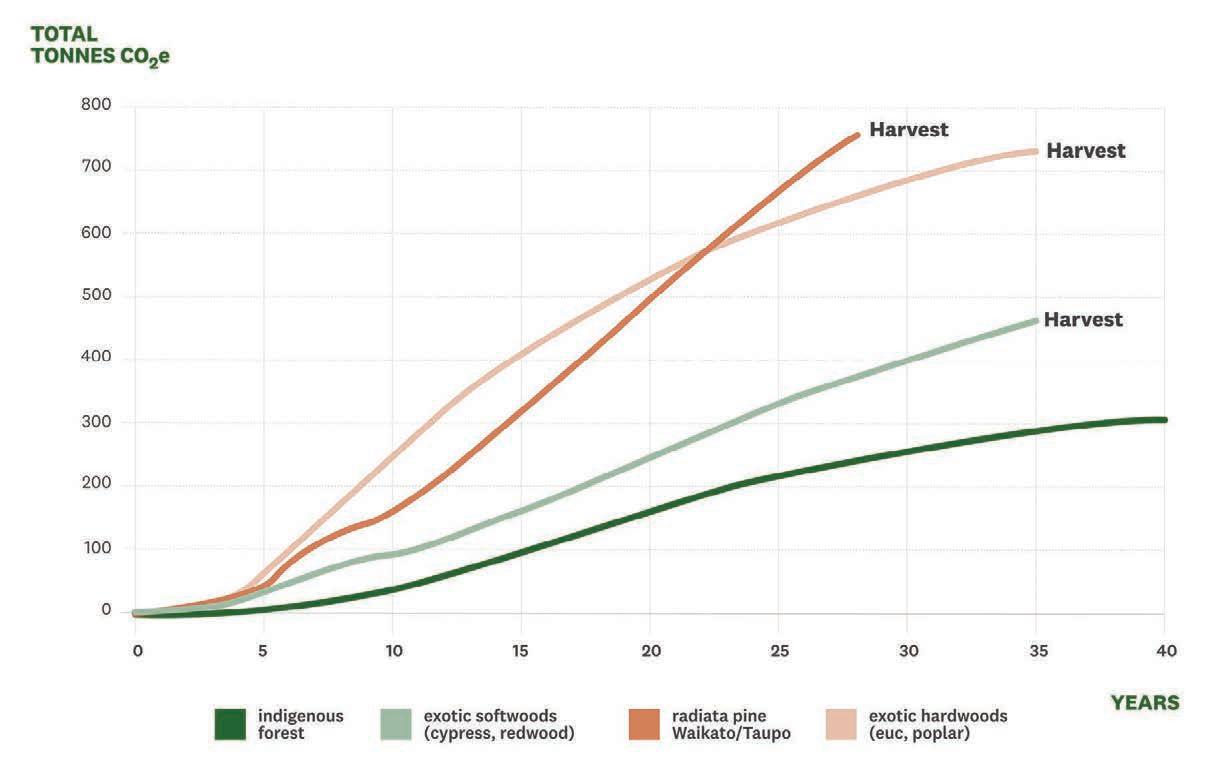
Traditionally NZ has favoured the first option, afforestation.
Taking what is often literally a “green fields” site and turning it into trees is easily defined, and relatively easy to measure.
But for trees to provide a means of sound sequestration they must tick four boxes:
• The carbon they capture must be quantifiable. In NZ’s case this is usually using “look-up tables” to determine carbon captured by specific tree type per annum.
• They must offer permanence, that is, deliver a long-term means of mitigating carbon by absorbing, and keeping it stored, over time. This is why farmers do not receive credits for growing grass – it is not permanently gaining in mass and carbon accumulation, but eaten by animals.
• Thirdly, they must avoid
“leakage” – not cause increased emissions beyond the area they are planted in.
For example, in South America some payments made to landowners to not cut down trees have only led to those payments being used to fund tree felling outside the project area.
• The final and most complex box to tick is that tree planting must follow the principle of “additionality”.
Additionality at its simplest is acknowledging improvements in carbon stored in vegetation that are over and above what would have happened had that vegetation been left as it had always been.
Not the simplest concept to grasp, with a title likely to make many farmers’ eyes glaze over, additionality is nevertheless critical for drystock farmers in particular.
Their options to reduce carbon emissions are relatively limited. Many have been intensely engaged in planting new vegetation areas or improving the areas they already have through pest control
and fencing – that is, improving forested areas above what they would have been under normal circumstances.
Those actions taken on many farms go beyond the singular, “carbon only” focus that NZ’s existing Emissions Trading Scheme (ETS) forest-based mitigation efforts revolve around.
A key reason for the pastoral sector wanting to avoid being measured in the ETS was the scheme’s failure to recognise the differences between carbon dioxide and methane to global warming (split gases), and its inability to allow for varying vegetation types that sequester carbon on farm.

There is also a strong biodiversity argument that the ETS is not capable of accounting for.
The ideal is to recognise improvements made to onfarm vegetation that not only sequester more carbon but also improve water quality and boost biodiversity.
These are ultimately ecological services that could be incorporated into future iterations of He Waka
Eke Noa (HWEN) credit valuations.
Farmers attending HWEN meetings would have noted how they were to be awarded sequestration credits for work done on vegetation areas both before and after 1990. But the passage of time and poorer aerial imagery in 1990 makes determining deliberate improvements to blocks of suitable vegetation a tough job.
Since then, 2008 has been set as an alternative base year. Thanks to better satellite imagery and detail, any improvements that come over and above “business as usual” can be better counted.
Arguably the carbon-focused ETS scheme also fails to acknowledge the human element of NZ’s rural landscape.
Left to its own market-driven devices, the scheme would result in wholesale planting of trees, and the complete replacement of emitting livestock on significant areas of country with plantation forestry.
For most New Zealanders this would not be socially or economically acceptable.


 Richard Rennie TECHNOLOGY Emissions
Richard Rennie TECHNOLOGY Emissions
SHEEP and beef farmers have been significant contributors to native and exotic plantings in the past decade across New Zealand. The actual extent is still being determined by Beef + Lamb NZ, but funding applications to the One Billion Trees programme helps give a general estimate on drystock farmers’ contribution. Under the fund, almost 60% of the land area where grants were approved is in largely drystock catchments.
Estimates by Te Uru Rakau NZ Forestry Service are that up until this year, 474 million trees were planted under the Ministry for Primary Industries’ One Billion Trees scheme, with an additional 120 million set to be planted this year.
In addition, there have been significant plantings by farmers who have not applied to the fund, or who may have been funded through other projects, such as catchment groups and hill country erosion programmes.
Funded or not, farmers who have tree blocks on their land have to consider how they can be counted to help offset emissions under He Waka Eke Noa (HWEN).
At present the HWEN settings are still being drafted, and subject to some final details.




But to help readers get a handle on additionality and impacts of plantings, Farmers Weekly has worked up some possible scenarios that may or may not offer carbon offset options.


The 80ha block of native trees on our place is unfenced, and is going to stay that way as we use it to shelter our ewes over lambing time. Is there any claim on the carbon these trees are sequestering per annum anyway?
No, not in the NZ Emissions Trading Scheme (ETS) or HWEN. However, there could be some opportunity in the voluntary markets.
But there are some cases of farmers getting newly regenerating bush that some sheep have access to, into the ETS.
The criteria is that the area “has the ability to” meet the forest definition – that is, 30m average width, 5m average height, 1ha in size and 30% canopy cover.
Too many sheep munching on seedlings will impact the area’s ability to meet this definition, but a few won’t stop nature from taking its course.
In 2010 I fenced 100ha of native bush that had previously had no protection around it,
despite it not being a legal requirement in my district. Can the carbon gained by fencing the bush be claimed under additionality, and would it just be the extra carbon generated by having the fence there, or also would the natural yearly unfenced carbon that accumulates regardless also be claimable?
Just the extra carbon generated by having the fence in place. In essence the HWEN scheme doesn’t care when the management action took place, just that it did.
The naturally occurring carbon accumulation without the fence there wouldn’t be recognised as additional, and thus not credited.


We fenced a block of native trees from stock in 2000. Can I claim the extra carbon this block has sequestered as a result of being fenced?
You could receive credit for the extra carbon generated by having the fence in place. Based on the







HWEN original recommendations to the government, the additional carbon (coming as a result of fencing the bush) since 2008 could be able to be recognised in the levy scheme.
The base amount – that is, carbon stored in the forest prior to it being fenced and continuing on after being fenced – however, would not be recognised.
Our farm has 100ha of native bush on it that has been fenced off for decades. After it not doing very well due to pest inundation, a major pest control investment resulted in significant increase in understorey and canopy cover. Do we a) measure this increase and b) use the extra amount of carbon sequestered to offset farm emissions?
Unknown right now. However, it would be hard to measure the carbon increase for each bush block on every farm.
Thus, some kind of look-up table
may be developed that will help farmers estimate gains through pest control.

We fenced off 50ha of our worst farm paddock in 2006 and planted it in trees. Is there any carbon we can claim?
It depends on the kind and area of trees. If the area is ETS eligible, then you can claim the full yearly accumulation of the trees once entering them into the scheme. The carbon is allocated in 5-yearly “blocks”, the most recent of which closed at the end of 2022.
Thus, if someone entered their trees into the ETS before the 2022 cut-off, they could have claimed the accumulated carbon in those trees all the way back to 2018. If you decided to enter the trees into the scheme now, you could be allocated the carbon in them as generated between 2023-2028. If the area in trees is not ETS eligible, it is still up in the air as to how HWEN would recognise these.
Funded or not, farmers who have tree blocks on their land have to consider how they can be counted to help offset emissions under He Waka Eke Noa.
The electrification of a farm system is no bowl of cherries – but one Otago farmer has learnt lessons along the way that should help others in pursuit of low-carbon farming. Charlie Williamson reports.
WHEN Mike Casey sold his tech business and bought a cherry orchard in Central Otago in 2020, it was not with the aim of running the world’s first fossil fuel-free orchard – but three years later he has not only achieved that, he has shifted his focus to something even bigger.

Nothing within the Forest Lodge Orchard farm gate consumes fossil fuels, and any emissions outside his control – such as from fertiliser – are offset by its 9300 cherry trees, Casey says.
He’s done this by electrifying the entire orchard, with everything from the irrigation system to the brand-new 80 horsepowerequivalent electric tractor consuming renewable energy.
“It wasn’t that we set out to completely eliminate fossil fuels, it was more how do we do things as best as we possibly can,” Casey says.
“But over the course of two to three years we actually managed to make every last function on the farm electric.”
But through this journey of electrification of his farm, just north of Cromwell, Casey came up against a problem in New Zealand’s food system – that farmers aren’t properly rewarded for their environmental efforts.

Farmers and growers are told that in order to maintain their current premiums, they need to satisfy global customers’ demands for environmentally sustainable products – but that premium often doesn’t make it to the farmer, Casey says.
“The problem we have with
our food systems at the moment is that everybody in the middle swallows all of that margin, and what the farmer gets back doesn’t reflect the sacrifices they’ve made on farm.
“So what is happening are farmers are being told to overcapitalise on their operations, because something like electric technology is a lot more expensive, for something that might not have a payback period for eight to 10 years.”
offsetting, and not just think about slapping a badge on an existing business model and continuing the same type of behaviour, we need systemic change in how we produce our food.”
In the end he built a certification of his own, NZ Zero, through AsureQuality, which incentivises emissions reductions rather than offsetting.
“What’s different about NZ Zero is that this is essentially a more powerful version of Carbon Zero because it’s completely eliminating all scope 1 emissions, and then offsetting what’s outside our control, such as products getting to market.”
Casey says prior to using the NZ Zero emissions reduction certification on his produce, the payback period on the electric technology was sitting at around eight years.
In his own case, having spent a lot of money on on-farm technology he looked to the market to recoup his costs –and came up short. Current certifications such as Carbon Zero didn’t sit well with him, due to the negative implications of some companies using the offsetting model to gain the certification while continuing with poor environmental practices.
“There’s all sorts of problems that exist with the offsetting model, and the biggest one is, no matter how much offsetting we’re doing, the parts per million of carbon dioxide is still growing at an alarming rate.
“And so my belief is that if we need to not just focus on
Now it brings in a significant premium on his fruit, which he says brings his payback period down to about 18 months.
“We fought really hard to work with an exporter as well as a retailer here in NZ. And we’ve now got somewhere around a 15% premium back to gate.
“That’s where I see the main catalyst for change coming from is the farmer being rewarded by the consumer.”
Casey accepts that his farming system is very different from land uses such as cropping or livestock farming, but his aim is to show farmers and growers what is possible and empower them to consider different options.
“A lot of this is transferable, but not 100%. And so the big thing becomes, [for] any form of farming
whether it be ground-based crops or pastoral farming which requires heavier machinery, some of that isn’t available right now.
“But what I’m doing by starting with horticulture and viticulture, is while we wait, which won’t be long as 500 watt per kg batteries have just been announced, I want to empower farmers and growers to consider these options.
“I want it [NZ Zero] to be something that enacts change. So what I’m really hoping for is
some of the early adopters of our certification will be heavily rewarded by the consumers that are demanding sustainability.”
Casey has an open door policy on his orchard, as well as opening up his books to help people understand the positive financial implications of electrifying an orchard.
“So we’ve had thousands of farmers from all land use types come and have a look at the operation, and all of them have left happy with a smile on their face –because all I’m doing is changing the conversation between carbon and money.”
Casey plans to bring this open door policy to the E Tipu IFAMA 2023 Agribusiness Summit in June, when he hopes to empower farmers and growers across New Zealand with his story.
“I’ve been doing a lot of presentations at a lot of conferences on what we are doing, but this is by far the biggest, so I’m just looking forward to getting out there and sharing my story.
“And I find my story is just not controversial, and it’s not combative, and it’s something that it doesn’t really matter where someone sits when it comes to politics, or climate change or anything like that.
“I’m just being like this is how much it cost us to electrify our irrigation, this is how much money we saved, this is how much carbon we saved, and all these kinds of things. So it’s not controversial in that regard, all I’m doing is telling the story of what we did.”
We fought really hard to work with an exporter as well as a retailer here in NZ. And we’ve now got somewhere around a 15% premium back to gate.Mike Casey CEO NZ Zero TEAM WORK: Rebecca and Mike Casey, of Forest Lodge Orchard, say the aim of their farming system is to show farmers and growers what is possible. PREMIUM: On his journey towards fossil fuel-free farming, Mike Casey discovered he would also need to create a mechanism beyond the farm gate to reward greener farming.
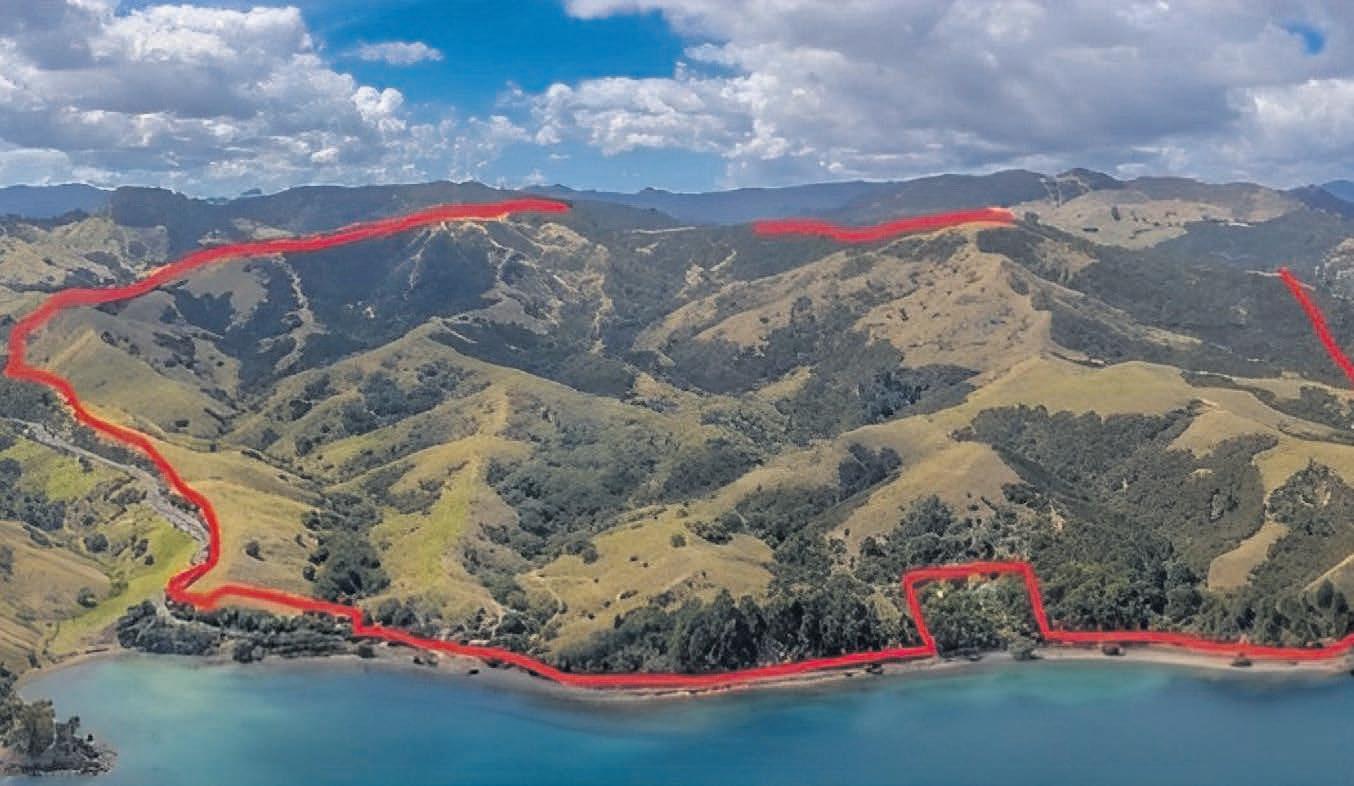



Grab this opportunity with both hands, the ultimate rural lifestyle is at Thames Coast Road. Overlooking the magnificent Hauraki Gulf, this farm spans over 412 ha and consists of three titles. The property has been operated as a beef breeding farm for the past decade and can accommodate up to 160 breeding cows with its 20 main paddocks and 11 holding paddocks, which are mostly fenced with electric fencing. In addition to the livestock facilities, the property also boasts a two stand wool shed that has been used for machinery and hay storage, two yards, a few lean-to sheds, and a utility shed at the back of the farm for additional hay storage. The three bedroom house with sleep out sits directly across the road from the beach at Wilsons Bay. This property offers the perfect opportunity to enjoy New Zealand's beautiful coastline and a quintessential rural lifestyle.


Tender closes 4.00pm, Wed 28th Jun, 2023, Property Brokers, 94 Duke Street, Cambridge View Wed 31 May 11.00 - 1.00pm Wed 7 Jun 11.00 - 1.00pm Web pb.co.nz/CBR116194

David McGuire



M 027 472 2572 E david.mcguire@pb.co.nz



Jeremy Waters
M 021 607 281 E jeremy.waters@pb.co.nz

Meantime the jury is now in on the NZ rural property market as it continues to slow. This April, for all rural sales 20ha+, there were 57 sales for $140m, which is 68% back on the same time last year by value of sales. Only seven Dairy sales were confirmed in the REINZ data nationally compared to 27 Dairy sales in April last year.
We continue to follow the 200ha+ market segment as a proxy for the larger Sheep and Beef sales (finishing and grazing), which at 46 sales continues to track at 50% of last year’s sales (71) as of April. However, this is a market segment where it does not pay to generalise about softening demand. There is no question that in some districts, farmers are stepping up where forestry left off, particularly in the Central North Island, with notable recent sales of $17,000+/ha driven off local farmer interest.
On the East Coast, it’s a different story. From North of Gisborne down to the Wairarapa, the market has seen a significant downward shift in market sentiment compared to the unprecedented carbon fuelled land appreciation run-up over the last five years. There is now a general expectation of a market reset, given current uncertainty with; alternative land use options, the challenge to Forestry’s “licence to operate”, and the obvious on-farm financial impact of absorbing the recent cyclone event, amongst everything else. Most farmers are flat-out doing their level best to keep their current farming systems intact and are unlikely to be too preoccupied with the ebbs and flows of the rural property market. While welcoming a rural market better matched to the commodity cycle down the track, most are probably praying for a kinder winter than last year.
The South Island market is different again. Not only is the carbon market uncertainty limiting alternative land use options, but you also have the likes of Environment Canterbury changing the way it’s interpreting the suitability of new forestry planting for Canterbury Hill Country and its potential adverse effects in flow-sensitive catchments. A quick look at a few maps would suggest this captures most of the Hill Country in the Central Canterbury region, but this time because of a lack of water!
The demand for iconic South Island stations remains strong. It continues to operate in its own “iconic” category with high interest rates and reduced alternative land use options, not appearing to have too much sway on value. There does not seem to be a bad time to bring these properties to the market. While South Island Hill Country has seen significant appreciation in land values, South Island production forest inquiry is currently back on last season.
Nationally, Overseas Investment Office forestry decisions appear very slow in coming forward. So again, the farmer-to-farmer market is expected to be the dominant driver for the spring aligned to farm returns and cost of finance.
Big picture, rural NZ will welcome the significant moderating of forestry and carbon forestry demand. BLNZ CEO Sam McIvor was recently quoted as saying, “175,000/ha of sheep and beef farmland was bought for forestry conversion between 2017 and 2021”.
Production forestry returns on a stand-alone basis could never have driven the land speculation of recent years. On the contrary, historically, deforestation was the dominant driver.
The debate on what is in the national best interest continues. We have signalled for several seasons now that the current ETS carbon offsetting policy framework is not sustainable in its current form and creates significant concentration risks, particularly for many North Island East Coast rural communities. More latterly, production forestry is also in the crosshairs because of successive year-on-year weather-related disasters.
The answer has always been an integrated policy solution. Production forestry has underwritten rural land values for the last 40 years. The current pace of afforestation change without the appropriate local government land use regulation has tipped the scales well past what has historically been in the national best interest. We need pastoral and forestry sectors to thrive, supported by much-improved policy and regulation, tied to the actual land-based production systems, and supporting sequestration. Not unrelated, third-party industries trading off the back of NZ’s most significant primary sector exporters, claiming to be on the journey to Net Zero through the ETS.
At Property Brokers, we have concluded sales over this last month, close to, or at record levels, for that location and type of property. A powerful marketing campaign and a well-thought-out strategy will always be the key to selling properties. Our team is genuinely optimistic about what the next 12 months will bring. We are doubling down on the planning to reflect the current reality in support of the all-important spring market.
There is never an easy time to buy land, and the best land will always take every ounce of your capacity to get a deal done. It’s always been that way, but it gives back to the business year after year. To get to that point, you must take risks.
Many farmers have the holdings they have today by trading farms to get to where they wanted to be. In times like these, when sales drift off, you’ll often find the best value opportunities.
Moving to Dairy, sales for January to April this year have seen 54 sales nationally for $283m, back 52% by value on the same time last year.
Quality, fully improved Dairy Farms, for the most part, have either met or exceeded initial sale expectations this season. Tier two and three Dairy Farms have struggled to clear this season, given we haven’t had last year’s buyer interest from intensive Beef finishing, outside of the dominant Dairy regions. This we attribute to proven businesses having to absorb ever-increasing interest rates and farm expenses. We hold two views on Dairy: quality Dairy Farms represent excellent long-term value opportunities at current prices. Secondly, tier two and three Dairy Farms will need value guides more aligned to highend beef finishing than the Dairy payout to meet the market. Any way you look at it, Dairy represents excellent value for money and a long-term value store. Once the broader economy registers just how world-class our Dairy production systems are, those who stay the course supporting NZ’s largest exporter are likely to capture the significant upside over the next decade. The last ten years have been very hard going and at odds with every other primary sector asset class that has seen unprecedented value gains. We see entry-level Dairy Farm ownership over the next few seasons as a significant opportunity for the next generation looking to get a foot on the rural property ladder. To that end, we intend to initiate a range of programs encouraging those with capital to look further afield for opportunities. Equally, Dairy vendors prepared to consider delayed settlements or vendor options, may find they capture the desired exit strategy by trading a little more time for the final payment. We remain very interested in anybody open to these scenarios and we have specialists in our business that can assist directly in pulling these scenarios together.
Planning starts now; we are prepared to look at all the options.
It has never been more critical to get advice. Our team regularly operates across regions to maximise the best results for our vendors. Our national reach and internal communication have been a hallmark of our business growth season on season.
In our next update, once the outcomes from the current production harvest are to hand, the team will provide an overview of property market influences and their impact on our growers.
If you want the best shot at the best outcome this spring, call 0800 367 5263 or visit pb.co.nz. Or better still, come and see us at the Mystery Creek National Field Days.
 Conrad Wilkshire, GM Rural for Property Brokers Ltd conrad@pb.co.nz
Conrad Wilkshire, GM Rural for Property Brokers Ltd conrad@pb.co.nz



















In this update, we review the pastoral sectors, specifically finishing and grazing 200ha+ and, Dairy.
National Rural Sales 20ha+ 4 Months to April Year on Year Change







National Dairy Sales 20ha+ 4 Months to April Year on Year Change
National Sheep & Beef Sales 200ha+ 4 Months to April Year on Year Change



Situated inland from Whanganui City on two freehold titles are 573 hectares of regenerating native bush and manuka utilised for hunting, honey collection and recreational activities. The property is located approximately 37 kilometres northwest of Whanganui in an area that is predominantly regenerating bush, manuka and established forestry. Contour ranges from medium to steep hill country with large areas of manuka, native bush and a small stand of pines. Improvements include a near-new two-bay steel lock-up shed, two main tracks off Kauarapaoa Road, one running through a central valley and the other providing access to a leading ridge for beehive placement of up to 380 hives. The property has produced high-quality honey and offers recreational and hunting opportunities for outdoor enthusiasts. bayleys.co.nz/3100494



95 Marshall Road, Rangiwahia

Located 11 kilometres from State Highway 1 Ohingaiti are 404 hectares of easy medium to steep hill country used primarily as a sheep and beef breeding platform. The current owners have focused on fencing and fertiliser with annual applications for the last twelve years including 2023. A high level of improvements includes three sets of well-positioned satellite yards, cattle yards, a four-stand woolshed with covered yards plus a comfortable threebedroom home with detached double garage. The farm is accessed off Marshall and Mangamako roads with internal access provided by a great network of well-maintained farm tracks. Subdivision is all conventional fencing with 30 main paddocks and additional holding paddocks. This is a great opportunity to secure a strongperforming breeding unit. bayleys.co.nz/3100500
bayleys.co.nz
573.5ha
Deadline Sale (unless sold prior)
1pm, Thu 15 Jun 2023
49 Manchester Street, Feilding
Mark Monckton 021 724 833
mark.monckton@bayleys.co.nz
Knud Bukholt 027 222 6161 knud.bukholt@bayleys.co.nz
404.7216ha
Deadline Sale (unless sold prior)
1pm, Tue 20 Jun 2023
49 Manchester Street, Feilding
Phone for viewing times
Mark Monckton 021 724 833
mark.monckton@bayleys.co.nz
Jack Monckton 027 394 3705
jack.monckton@bayleys.co.nz
Situated only 3.5km from Waipukurau this property offers the ultimate in contour and location along with numerous farming options. The property is held in four titles with a land area of 318.0002ha and is currently being farmed under a lease agreement with a cash cropping along with a winter lamb finishing program. The contour is all flat and has benefitted with areas of tile draining over the years. The soils are a mix of Matapiro sandy loam, Waipukurau sandy loam and Arlington loam. Water reticulation to all paddocks. Infrastructure includes four stand woolshed, sheep and cattle yards and numerous shedding. Rylands comes to the market offering a discerning buyer an opportunity rarely seen in Central Hawke's Bay. bayleys.co.nz/2870964 propertybrokers.co.nz/WR113547

• 670 Fencourt Road and Beer Road, off Victoria Road, Cambridge
• 60.1055 hectares (sts) flat to easy rolling contour; some steeper sidlings
• a mix of complex clay and sandy loam soils sand pit on property
• currently utilised for finishing lambs but ideal also for dairy support, beef finishing, calf rearing or maize growing
• fertility benefits from Fonterra wastewater irrigation on part of the property
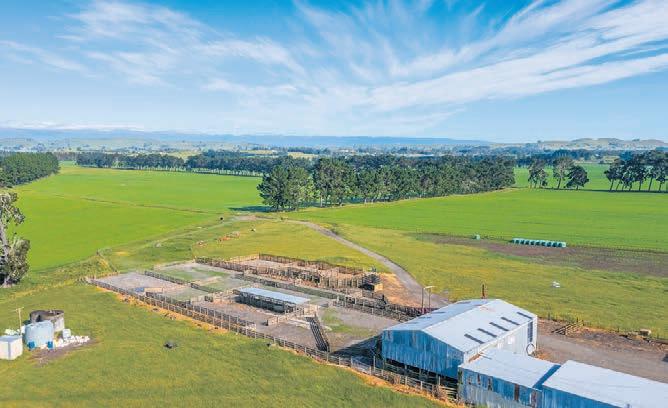


Ph Brian Peacocke 021 373 113
Open Day: Thursday, 1 June 1.00pm 2.30pm
• a good range of older but functional buildings including a 10 aside herringbone farm dairy and large shedding ideal for calf rearing; new heavy duty bridge
• no dwelling building sites with panoramic views to Pirongia & Maungatautari
• excellent primary and secondary schooling options within easy travelling distance
• additional option for inclusion with the above 2 ha with large 2 storied homestead on elevated knoll with sunny north facing outlook over the property p.o.a.
TradeMe search # R1424 Sale by Tender Closing Date: Wednesday, 21 June 2023



VERSATILE DAIRY & FORESTRY INVESTMENT



Kahu Farm is comprised of 433 hectares of mixed contour (flat to strongly rolling) fertile land, with an effective farm land area of 219 hectares*. The property has the capacity to produce over 260,000kgMS* per annum, with a five year average of around 239,000kgMS* per annum. Centrally located tidy infrastructure, including a 40-aside herringbone shed, complete with in-shed feeding, automatic cup removers, concrete feed pad, and compliant effluent system. Timely fertiliser applications and effective management have consistently improved farm production since the property’s conversion.

Deadline Offers:
Wednesday 28 June 2023 at 4pm (NZST)**
Wyatt Johnston +64 27 815 1303
Jeremy Keating +64 21 461 210
*Approximately
**Unless sold prior
+ 433.06ha* freehold land, 219ha* pasture area
+ 239,000kgMS* (five-year average)
+ 40 aside herringbone milking shed with ACRs, in shed feeding
+ 157ha* woodlots (1998-2022 age class)
+ Flexible settlement date – Vendor to operate until 30 May 2024
+ This farm land is available for sale
The Market will be Met!
This 165ha farm is predominantly north facing with ample hay country. Bore water supplies the two dwellings along with farm. Fenced into 18 paddocks, 13 of which water is supplied via trough.


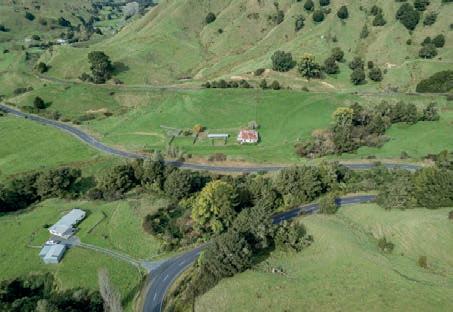


Three stand woolshed with attached concrete floor workshop, six bay covered lean-to, separate three bay enclosed haybarn, sheep and cattle yards with loading out race and crush.
Dwellings include a Huntly brick house with three bedroom, two bathroom, office, rumpus room plus two car garage, and a two bedroom, two bathroom cottage plus two car garage.

pggwre.co.nz/PUK37867
5 4 TENDER
Plus GST (if any)
(Unless Sold By Private Treaty)
Closes 2.00pm, Thursday 29 June
VIEW 11.00-1.00pm
Tuesday 30 May
Tuesday 6 June
Sunday 4 June
E avanmil@pggwrightson.co.nz M
• Approx 5450 stock units, 570 effective hectares

• 3 years from 01 July 2023 with longer term potential
• A very sound, reliable hill country unit with useful calving country
• Well developed with a good dwelling, substantial woolshed and covered yards

• Approx 45 paddocks with good permanent fencing

• First right of refusal offers potential for longer term relationship with compatible Tenant
• Honey opportunity available to Tenant and established hunting operation can be considered
Information pack with basic lease terms & conditions, proposal requirements and inspection dates available from:
Bring your own 4X4 on a guided tour to discover more of the South Island.


Tour 1: Molesworth Station, St James, Mailings Pass & Rainbow Stations

Dates: 2023 – Nov 13-16 2024 – Feb 19-22, March 4-7, March 11-14, March 25-28 April 8-11, April 22-25
Tour: 2 D’Urville Island and Marlborough Farms
Dates:

Waitatapia station is a family-owned farm which is looking for a shepherd with a minimum of two year’s experience to help with all aspects of stock work associated with intensive lamb, steer, and bull finishing, plus working with breeding cows and a small number of breeding ewes.

The farm is very well located in the lower Rangitikei 10km from Bulls and central to Palmerston North, Wanganui, and Marton, providing great opportunities for partners employment. Local sport and community clubs are available along with good schools suitable for primary and secondary aged children. A modern warm three-bedroom home with open living is available on the farm for the successful applicant.
Waitatapia is a 2000ha plus farm with irrigation, forestry, and cash cropping with most of the stock work happening during autumn, winter, and spring periods.
The successful applicant will become part of a team working with the stock manager and other employees but will be expected to be capable of working alone when required. Modern stock handling facilities are available for weighing sheep and cattle and for holding lambs for dagging.
The successful applicant will need two – four dogs under good control. He or she will be honest, tidy, and willing to learn, plus show initiative and an enthusiasm for the job.
Please apply by emailing office@waitatapia.co.nz with at least two work related references including contact details for reference checking.
www.waitatapia.co.nz
We are looking for a passionate stock person that’s self-driven, with a keen eye for detail, to join our large-scale lamb finishing operation.
Job Description
Your role will be to work alongside our Livestock Supervisor with a strong focus on efficiently finishing lambs to their full potential. Some seasonal tractor work will also be required outside of lamb season, predominantly around the summer harvest.
Qualifications
The successful candidate will have:
• A passion for everything livestock and a desire to learn and progress
• Attention to detail and take pride in completing tasks to a high standard

• Good stock and animal husbandry skills
Own 2 – 3 working dogs under good command
Additional Information
In Return we can offer:
• A challenging but rewarding work environment
• Competitive starting remuneration rates depending on experience

• On farm housing available If required Ready to start?

Applicants must be legally entitled to work permanently in New Zealand. If this sounds like the opportunity you have been looking for please apply now via email to mike.carter@fairfieldfarms.co.nz and include a cover letter and a copy of your CV or alternatively contact Mike on 027 353 7315

Company: Terra Sancta

Location: Felton Road, Bannockburn, Central Otago, New Zealand
Do you love wine? Do you thrive in a collaborative team environment? Do you want to contribute to creating premium award winning wine in one the best places in NZ?
Terra Sancta, a premium producer of wine with four vineyards and our winery based in Bannockburn, Central Otago. We seek a dedicated and skilled Machinery Operator/ Irrigation Maintenance specialist to join our team.
About Terra Sancta:
Terra Sancta is an grape farming and wine production business nestled in the premium Central Otago subregion of Bannockburn. Our farming system is focused on regenerative agriculture and we are committed to the health of our soils, our place and the production of high-quality wines.
Key Responsibilities:
• Operate tractors and other vineyard machinery;

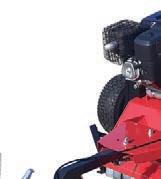

• Monitor and maintain irrigation systems (mostly drip irrigation);
• Ensure the application of agrichemicals adheres to organic wine growing requirements;

• Maintain accurate and up-to-date job sheets, and records; and...
• Assist in managing a small herd of Baby Doll sheep.


Required Skills/Qualities:
• Possess a valid New Zealand drivers licence.
• Experience in machinery operation and tractor driving.

• Familiarity with agrichemical application processes and protocols.
• Ability to work independently and as part of a team.
• Bonus points: possession of a Grow Safe certificate.
We welcome applicants with varying levels of experience. If you believe you possess a strong skill set with some tractor and irrigation experience, we would like to hear from you as well.
To apply, please submit your resume and a cover letter detailing your relevant experience and why you are interested in joining Terra Sancta.
Email: sarah@terrasancta.co.nz
Note: Only shortlisted candidates will be contacted. All applications will be handled with strict confidentiality.
www.craigcojetters.com



GOATS WANTED
GOATS WANTED. All weights. All breeds. Prompt service. Payment on pick up. My on farm prices will not be beaten. Phone David Hutchings 07 895 8845 or 0274 519 249. Feral goats mustered on a 50/50 share basis.
GRAZING AVAILABLE
HAVE SPACE FOR 180 dairy heifers. Half an hour south of Te Kuiti, ex-golf course, at to rolling. Quality pasture, troughed paddocks. Long term preferred. Terms and conditions negotiable. Phone 07 895 5094 or text 027 365 0983. WINTER COWS. Ex-dairy farm, suit 300 cows, plenty of baleage. Email: nilsreiten@ gmail.com or phone 027 482 2575. Taumarunui.


HORTICULTURE












WILTSHIRES-ARVIDSON. Self shearing sheep. No1 for Facial Eczema. David 027 2771 556.




BOOK AN AD. For only $2.30 + gst per word you can book a word only ad in Farmers Weekly Classi eds section. Phone Debbie on 0800 85 25 80 to book in or email wordads@agrihq. co.nz

RURAL MASSAGE
RELAXING FULL BODY massage in rural Ohaupo. Unwind. De-stress. www. ruralmassage.co.nz or call 027 529 5540.

SHEEP SCANNING AVAILABLE

WORK SMARTER with a farm map based on the latest satellite imagery. Drone photography also available
NZ KELP. FRESH, wild ocean harvested giant kelp. The world’s richest source of natural iodine. Dried and milled for use in agriculture and horticulture. Growth promotant / stock health food. As seen on Country Calendar. Orders to: 03 322 6115 or info@nzkelp.co.nz
LEASE LAND WANTED


RANGITĪKEI, MANAWATŪ or HB areas. Dairy or grazing farm. Regenerative farming practiced. Open to developing land in partnership. Phone Michael 027 223 6156.



IS YOUR SHEEP scanning getting ridiculously expensive? My rates might surprise you. Over 20 years quali ed sheep scanning experience. Hassle free, easy system with 3-way draft. I do the marking. $$ saved to you. Wet/dry to all multiples. Lates included. Areas covered Taihape, Hawke’s Bay, Whanganui, Wairoa, Wairarapa. Phone to discuss options. Greg on 0274 588 900.
WANTED




SAWN SHED TIMBER including Black Maire. Matai, Totara and Rimu etc. Also buying salvaged native logs. Phone Richard Uren. NZ Native Timber Supplies. Phone 027 688 2954.
GIBB-GRO


Reach every farmer in New Zealand every week

Call Debbie 027 705 7181
RED DEVON BULLS. Well grown, purebred. Feilding. Phone 027 224 3838.


MASSAGE BODY MAINTENANCE
SORE BACK? Busy lives? Sports massage. Relaxation massage. Pedicure. Mobile services at your home. BOP. Call 020 411 34425. www. massagetherapyirene.com
WHAT’S SITTING IN your barn? Don’t leave it to rust away! We pay cash for tractors, excavators, small crawler tractors and surplus farm machinery. Ford –Ferguson – Hitachi – Komatsu – John Deere and more. Tell us what you have no matter where it is in NZ. You never know.. what’s resting in your barn could be fattening up your wallet! Email admin@ loaderparts.co.nz or phone Colin on 0274 426 936 (No texts please)
• All trials prove better breeding values make you more money.
• Orari Gorge Herefords are proven performers in Progeny Tests across all breeds.

• All cows and heifers wintered on steep hill country up to 3,500ft with no supplement.


• All bulls and replacement heifers independently structurally assessed on Breedplan.



• Every calf DNA tested for parentage, defects, and accuracy of breeding values.





• The right Hereford bull can return $100s in quality premiums per calf PLUS $100s per calf with Hybrid Vigour when used over Angus cows.






















































DOWNS, WAIKATO

1pm Monday 12th June 2023

Comprising:








24 x Well Grown Top Quality
Shorthorn Heifers


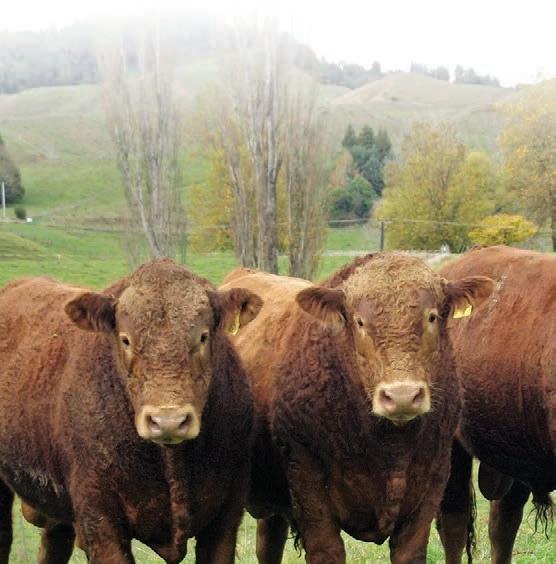
Vetted in calf to Raupuha Midnight 19098 Calving August/September 2023



This is the last chance to purchase the Lochburn Prefix with these lovely Heifers. They come forward in great condition with outstanding temperament.
For further information please contact:

Vendor: Barbara Stokes 027 209 040
NZFL Stud Stock: Brent Bougen 0272 104 698








Tommy bought a horse from a farmer for $250 and the farmer agreed to deliver the horse to Tommy the following day.
The next day though, the farmer turned up at Tommy’s house and said, “Sorry son, but I have some bad news, the horse died.”
Tommy replied, “Well, then just give me my money back.
That’s fine.”

The farmer said, “Sorry, I can’t do that. I went and spent it already.”
Tommy then said, “Okay, then, just bring me the dead horse.”
The farmer was surprised and asked Tommy, “Why? What ya gonna do with him?”
Tommy replied, “I’m going to raffle him off.”
The farmer laughed and said, “You can’t raffle off a dead horse! Who’d buy a ticket?”

Tommy answered, “Sure I can, just watch me. I just won’t tell anybody the horse is dead.”
A month later, the farmer met up with Tommy again and asked, “What happened with that dead horse in the end. Did you raffle him off?”
Tommy said, “I sure did. I sold 500 tickets at $5 a piece.”
The farmer said, “Didn’t anyone complain?”
Tommy smiled and said, “Just the guy who won. So I gave him his $5 back.”


















2ND JUNE 2023

Bulls for Sale
On farm by Private Treaty
Contact Kelly O’Neill 06 385 4558
OREGON GENETICS TOP PRICE MASTERTON WEANER FAIR AT 1285.00 320KG AVE HERRICK LAND CO LTD
“CONSISTENCY IS THE NAME OF THE GAME. THAT’S ALWAYS BEEN OUR AIM.”
For further enquiries contact Keith P: 06 372 2782 l E: oregonangusstud@gmail.com
WEDNESDAY
Hauroko Valley Combined Bull Sale
3pm: Te Whanga Final Angus Bull Sale
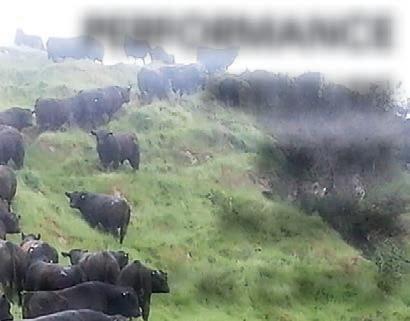



4pm: Hingaia Angus Bull Sale

7pm: Korako 2-Year-Old Speckle Park Bull Sale
THURSDAY 1 JUNE: 11am: Shian Angus Bull Sale

1pm: Okawa Hereford 54th Annual Bull Sale

1pm: Dandaloo Angus Bull Sale
2pm: Black Ridge Angus Bull Sale
2pm: Glenbrae Hereford Bull Sale

4pm: Waikaka Hereford Bull Sale
4.30pm: Puke-Nui Angus Bull Sale
FRIDAY 2 JUNE: 11am: Oregon Angus Bull Sale


1pm: Kairuru Herefords Bull Sale
2pm: Kay Jay Angus Bull Sale
STOCK & PLANT CLEARING SALE
Ram 19/4/23)
750 Romney 3, 4 & 5 Shear Ewes (Jan shorn, R/W Romney Ram 19/4/23)
400 Romney MA Ewes (Jan shorn, R/W Southdown & Suffolk Texel Rams 18/3/23)
The ewes are Motonui breeding hill country easycare ewes. Over the last 5 years have lambed 145% unshepparded with killing weights averaging 18kg. Ewes have had Flexidine on 5-in-1 programme, compo and toxo.

Plant:


2012 Suzuki Farmworker Truck, Hydraulic Top Link, Hardi Magna Spray Unit 12m, Hustler Soft Hands, Aitcheson Spreader, Feraboli V Rake, Disc Plough, Beech Trailing Feedout Buggy, Backblade, Racewell with Scales, Dagging Machine, 4 x Sunbeam Shearing Machines, Allflex Hydraulic Woolpress, Willet 12ft Tandem Discs, Hooper 12ft Chain Harrows, Drag 10ft, Grass Harrows, Rooler Drill 10ft, Howard Rotary Slasher, PZDS 5000 Haybob, Pipe Spin Ginny, Rear Forks, Honda 230SL 2 Wheeler, Deutz-Fahr GP30 Round Baler (String), C-Dax Broadcaster, C-Dax Bike Tanks, Bandsaw, FecPac, MF65 Rear Rims, Footrot Bath, Freezer 700Ltr, Roller Tailing Chute, Tailing Iron, Scrubcutter, Arc Welder, Mate Posthole Borer, Rims/Tyres, Bike Trailer, Tractor Hydraulic Top Trailer (old), Carpet Roller (old), Frontblade (old), Bag Barrow, Hay Feeders (round & tub), Novaflow, Insultimber Droppers, Electric Fence Reels, Electric Fence Standards, Solar Fence Unit, Assortment Alkathene Pipe, Assortment Timber, Posts, Strainers, Poles, Sleepers, Gates, Various Sundries.
Enquiries:
Craig Dempster (PGW) 027 432 3252


Peter Grellet (Peter Grellet Livestock) 027 222 4242
Kelvin & Rianda Ross (Vendors) 03 415 8039
FOR forestry and wood markets as a whole, this year has been one of the tougher ones on record, bringing with it a lot of the same problems that were plaguing the trade last year.

An extended rough patch wasn’t completely unexpected – wood markets are mainly dictated by construction rates, which themselves are dictated by economic outlooks. And those outlooks have been poorer for a while now.
When it comes to logs, the obvious place to start is China.
In the past 12 months it has purchased 89% of New Zealand’s log exports. While buyers there did come back from the Chinese New Year with a zing in their step, that was short lived as it sent log prices out of kilter with what mills there were receiving for their





lumber. The end result was a swift correction going into this month, bringing the price for logs landed in China down to their lowest since early-covid days.
A few in the industry had picked this before it happened. China’s property development market has been in a spot of bother for a while now, with a number of major companies barely skirting bankruptcy with the aid of the Chinese government.
In 2022 the amount of starts on new property builds in China was 39% down on the year prior, which was already lower than at least the three years beforehand. This was largely responsible for log prices into China losing value step-bystep throughout last year. For the first four months of 2023, property starts are down an extra 20% from last year.
A new potential pressure point could come from Australia too. Before 2021 they used to supply a little over 10% of softwood logs into China but were banned
from that point forward after the Australian Government criticised China’s response to the covid outbreak. However, this ban was listed in mid-May. One thing that’s smoothed the ride down at the NZ end of the supply chain is shipping costs. From mid-2021 to mid-last year these were at their peak and took around a 40% bite out of the money exporters were getting paid by Chinese customers.
But these costs have almost halved since August, only holding a little above historic norms since the start of the year.
Locally, there’s been little for the industry to get excited about either. Constant interest rate lifts and the subsequent cooling of house prices have really popped the bubble in demand for timber that developed through 2021.
Given input costs have risen for mills over this period too, many are trying to manage the drop-off in orders by cutting back output. Others have sold excess timber at discounted rates to overseas buyers to try to re-balance the market, though challenges in getting shipping containers have made this more difficult than otherwise would be the case.
As a whole, there’s yet to be a major change in log prices into local mills, though. The









structural and industrial grade logs are likely to come under more pressure going forward given the aforementioned housing issues, plus extra supplies coming on the market as efforts are made to recover trees in the central plateau felled by Cyclone Gabrielle’s winds.
Pruned logs are more likely to hold up short term as these are often pulled from smaller scale forests, and owners of these are more likely to halt harvesting while export markets are poor. Carbon markets have dropped significantly lately too, mainly due to uncertainties around future changes to the scheme, specifically how exotics forests will fit in long term. The market peaked at $88/ NZU in November last year but has settled to the low-$50 range since the start of the month, the lowest since mid-2021.
New Zealand’s forestry and wood markets are having to stand up to challenges from factors as diverse as Chinese real estate and the carbon trade back home
In 2022 the amount of starts on new property builds in China was 39% down on the year prior, which was already lower than at least the three years beforehand.Reece Brick MARKETS Forestry
More than 2000 calves offered at Feilding on Thursday, May 18 wound up the 2023 beef weaner fair season. It was a fitting end as results reflected the strength seen throughout the year.
Grass-driven demand was a major player in one of the best seasons seen to date, not only in the prices paid but also the weight of the calves.
At the final fair, traditional steers averaged 250kg and $1055 and exotic, 285kg and $1160. Traditional heifers averaged 235kg and $840.


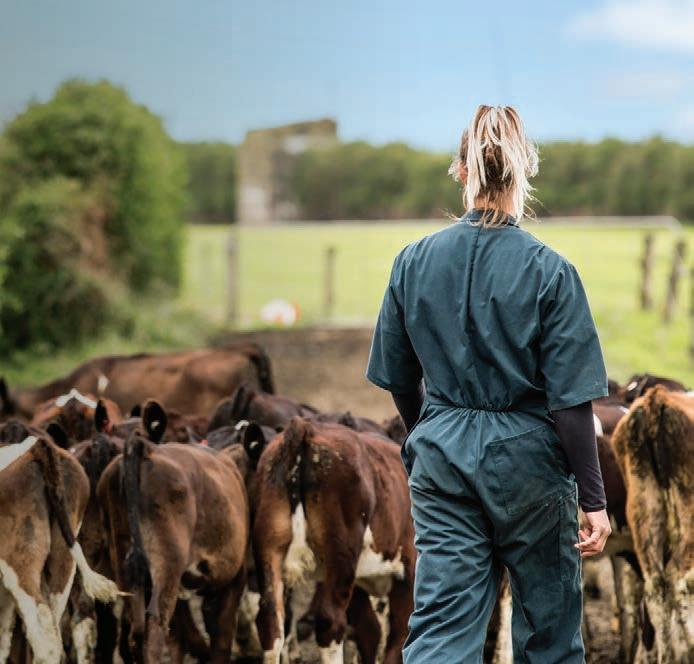


NOTE: Slaughter values are weighted average gross operating prices including premiums but excluding breed premiums for cattle.




















EL NIÑO may be building but Australia’s Bureau of Meteorology, a respected climate forecaster for our part of the world, says – as it has done since two weeks ago – that there is still little response in the atmosphere.
So despite being in an official “El Niño Watch”, the Pacific Ocean is currently considered “ENSO-Neutral”, which means it’s technically neither La Niña or El Niño at the moment.

Currently all international climate models indicate it is highly likely that temperatures in the
• Powerful high pressure (1040hPa) east of NZ slowly moves away
• Westerly quarter winds kick off this week (thanks to a storm in the Southern Ocean at 940hPa)
• June to kick off with high pressure moving in from the Tasman Sea
• Drier than average in the east
tropical Pacific Ocean will reach El Niño thresholds during our winter – but for an El Niño to be declared an atmospheric response is also required – for example a shift in trade winds, high pressure zones, and cloudiness in the Pacific.
Bureau of Meteorology (BoM) scientists say the risk of El Niño forming this year is twice the normal chance.
In our part of the world El Niño typically limits rainfall in eastern Australia during winter and spring. This is due to a significant uptick in high pressure zones parked over the eastern side of Australia and into the Tasman Sea.
This then impacts New Zealand, with those highs often blocking rain-making events between Australia and NZ and encouraging more of a west-to-southwest flow for our nation. This lifts cloud and rainfall for the South Island’s west and usually more cloud (but not more rain) for the western side of the North Island.
Many other places can be drier and hotter inland and towards the east – and yes, El Niño does increase the risk of droughts.
But as we’ve said before, it’s
THRESHOLDS:







important to remember that El Niño is not made in a perfectly calm laboratory with scientists and white coats. The Southern Ocean storms and Roaring Forties can make it harder to confirm how NZ is affected.
It’s worth noting we just had three consecutive La Niña events and yet only one of them – the





last one – felt like an actual La Niña weather pattern for NZ. The previous two brought drought to the North Island, which proves NZ can buck the trend.
If we look to our local NZ/ Australia weather patterns we are certainly seeing some hints of El Niño forming – mainly in the form of large high pressure zones, which
have been smothering Australia throughout May and as we go into June. This is keeping places like Queensland and New South Wales especially dry.
There are a few hints in our weather pattern that El Niño is slowly forming with these highs increasing and drifting further eastwards into the NZ area.
IF YOU CAN IMAGINE IT, A JCB SERIES III CAN LIFT IT.

Some farmers think a telehandler is for the big farms or best suited to European or North American operations. But you’ll be surprised to know that telehandlers are the fastest growing on-farm utility category in the New Zealand market. You’ll also be surprised by what you can do with a LOADALL and how much it improves productivity on all types of farms. You won’t however be surprised to know that the JCB SERIES III is the world’s No.1 LOADALL.
You’ll wonder how you farmed without it!
JCBAGRICULTURE.CO.NZ



